Governor’s Office of Economic Development
Governor’s Office
Economic Development
ANNUAL REPORT 2007
Centers of Excellence (COE)
Film Commission
Procurement Technical Assistance Centers (PTAC)
Rural Development
State Science Advisor
Utah in the News
Governor’s Office of Economic Development Partners
Economic
Utah
CONTENTS GOED Mission and Values . . . . . . . . . . . . . . . . . . . . . . . . . . . . . . . . . . . . . . . . . . . . . . . . . . .2 Letter from the Executive Director . . . . . . . . . . . . . . . . . . . . . . . . . . . . . . . . . . . . . . . . . . . .3 Preface . . . . . . . . . . . . . . . . . . . . . . . . . . . . . . . . . . . . . . . . . . . . . . . . . . . . . . . . . . . . . . . . . . .4 Utah on Top of the Economic Mountain . . . . . . . . . . . . . . . . . . . . . . . . . . . . . . . . . . . . . . .5 Governor’s Office of Economic Development Programs . . . . . . . . . . . . . . . . . . . . . . . . .11 Targeted Economic Clusters . . . . . . . . . . . . . . . . . . . . . . . . . . . . . . . . . . . . . . . . . . . . . .12
and Technology Parks . . . . . . . . . . . . . . . . . . . . . . . . . . . . . . . . . . . . . . . . . . . .19
Business
. . . . . . . . . . . . . . . . . . . . . . . . . . . . . . . . . . . . . . . . . . . . . .21
Recruitment and State Incentives . . . . . . . . . . . . . . . . . . . . . . . . . . . . . . . . .24 Entrepreneurial Development . . . . . . . . . . . . . . . . . . . . . . . . . . . . . . . . . . . . . . . . . . . . .29
Corporate
. . . . . . . . . . . . . . . . . . . . . . . . . . . . . . . . . . . . . . . . . . . . . . . . . . . . . . .30 International Trade and Diplomacy . . . . . . . . . . . . . . . . . . . . . . . . . . . . . . . . . . . . . . . .32
. . . . . . . . . . . . . . . . . . . . . . . . . . .34
. . . . . . . . . . . . . . . . . . . . . . . . . . . . . . . . . . . . . . . . . . . . . . . . . . . . . .36
. . . . . . . . . . . . . . . . . . . . . . . . . . . . . . . . . . . . . . . . . . . . . . . . . . . .38 Utah Office of Tourism . . . . . . . . . . . . . . . . . . . . . . . . . . . . . . . . . . . . . . . . . . . . . . . . . .40 Utah Recruitment Initiative . . . . . . . . . . . . . . . . . . . . . . . . . . . . . . . . . . . . . . . . . . . . . . .43
. . . . . . . . . . . . . . . . . . . . . . . . . . . . . . . . . . . . . . . . . . . . . . . . . . . . . . .44
. . . . . . . . . . . . . . . . . . . . . . . . . .45
Development Corporation of Utah . . . . . . . . . . . . . . . . . . . . . . . . . . . . . . .46
Fund of Funds . . . . . . . . . . . . . . . . . . . . . . . . . . . . . . . . . . . . . . . . . . . . . . . . . . . . .48
Utah
Science Technology and Research Initiative
. . . . . . . . . . . . . . . . . . . . .49 Utah Sports Commission . . . . . . . . . . . . . . . . . . . . . . . . . . . . . . . . . . . . . . . . . . . . . . . . .51 Small Business Development Centers (SBDC) . . . . . . . . . . . . . . . . . . . . . . . . . . . . . . .53 Manufacturing Extension Partnership . . . . . . . . . . . . . . . . . . . . . . . . . . . . . . . . . . . . . .55 Utah Defense Alliance . . . . . . . . . . . . . . . . . . . . . . . . . . . . . . . . . . . . . . . . . . . . . . . . . . .57 World Trade Center . . . . . . . . . . . . . . . . . . . . . . . . . . . . . . . . . . . . . . . . . . . . . . . . . . . . .59 GOED Organizational Chart . . . . . . . . . . . . . . . . . . . . . . . . . . . . . . . . . . . . . . . . . . . . . . . .60
(USTAR)
GOED Mission
To nurture an environment where Utah companies can be successful and the business community can create jobs that raise Utah’s citizen’s standard of living.
The Governor’s Office of Economic Development (GOED) charter is based on Governor Huntsman’s commitment to economic development statewide. GOED is an agency with two strategic business units, business development and tourism. The mandate for the office is to provide rich business resources for the creation, growth and recruitment of companies to Utah and to increase tourism and film production in the state. GOED accomplishes this mission through the administration of programs that are based around industries or “economic clusters” that demonstrate the best potential for development.
The Utah Governor’s Office of Economic Development (GOED) operates w ith an integrated economic development strategy comprising: university and industry based research; technology commercialization; access to capital; a government supported infrastructure including such things as talent recruitment and development, corporate incentives etc. GOED has programs established for business promotion, growth, creation, and recruitment. GOED also contracts with the private sector in order to expand its effectiveness and reach with business support programs and initiatives. GOED utilizes state resources and private sector contracts to fulfill its mission.
“The initiatives help create an environment where industry, research universities, capital, talent, technology and government can align around emerging or mature industry sectors that possess the greatest sustainable competitive advantage,” says Jason Perry, Executive Director of GOED. “The net effect is that these factors combine to create higher paying jobs, strengthen education and maintain a highly trained and efficient workforce which has raised the overall standard of living in Utah,” Perry continued.
GOED Values
• Integrity
• Drive change & continuous improvement
• Teamwork & cooperation
• Be the best at what we do, and partner for success
• To maintain the momentum of Utah’s “Dynamic Economy.”
Governor’s Office of Economic Development • Annual Report 2007 2
JON
State of Utah
M. HUNTSMAN, JR. Governor
GARY R. HEBERT
Lieutenant Governor
Governor’s Office of Economic Development
JASON
P. PERRY Executive Director
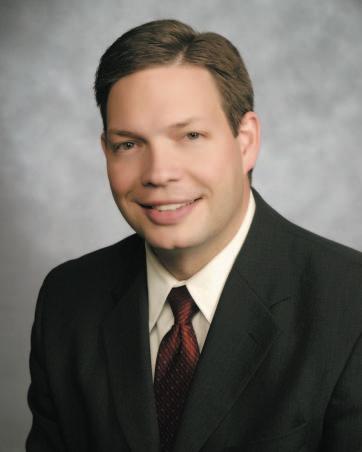
Dear Legislator and Business Leader:
It is a pleasure to present this Annual Report for FY2006-07. Utah is honored by the many accolades being given by leading business media and rating organizations. The Kauffmann Foundation has rated Utah as having the nation’s most “dynamic economy.” Forbes Magazine ranked Utah as the “second best place in the nation to do business.” Many other organizations have recently recognized Utah as a “Top Place for Business,” such as CNBC and the Pollina Corporate Top 10 Pro-business States review. Each ranking demonstrates that Utah has the hottest business economy in the nation.
We believe there are many reasons for this dynamism. When Governor Huntsman began his administration in 2005, he established a 10-Point Plan for economic revitalization in the State which includes:
1. Revamp Utah’s Tax Structure
2. Improve the Competitive Environment for Small and Medium-sized Companies
3. Recruit Businesses to our State.
4. Attract more Capital
5. Promote Growth in Target Industries
6. Enhance Utah’s National and International Image
7. Capture Global Opportunities for Utah Companies
8. Promote Tourism
9. Energize Economic Development in Rural Communities
10. Make State Government more Efficient
On every point, significant success has been realized. Our strong business economy has enabled the Huntsman administration and the Legislature to recommend and fund education and transportation at levels never previously achieved. At the same time the State has been able to give citizens and businesses significant tax relief, which includes a state tax rate reduction to 5% and an additional $200 million in targeted tax reductions. All of these achievements have been talked about and hoped for over the years but only made possible by a strong and growing economy.
Our Utah citizens are truly able to enjoy “Life Elevated.” Utah economic development efforts have created an environment where business can grow. While unemployment is low, a record number of jobs are being created. Combined with Utah’s unparalleled quality of life, working in Utah offers one of the best work/life experiences to be found anywhere.
Sincerely,
Jason P. Perry Executive Director Governor’s Office of Economic Development
Governor’s Office of Economic Development • Annual Report 2007 3
324 South State Street, Fifth Floor • Salt Lake City, Utah 84111 • (801) 538-8700 • facsimile (801) 538-8888 • www.goed.utah.gov
PREFACE
The Governor’s Office of Economic Development (GOED) works to enable business development and foster economic growth. We focus on creating, growing and recruiting as many family-sustaining jobs in Utah as possible. As the job base grows; the state receives additional tax revenues to support education and other important programs and Utah’s families enjoy an increased quality of life.
While retail sales taxes are vital, a consistent sales tax stream is dependent upon families with well-paid, stable jobs willing to spend. Working to expand Utah’s manufacturing, high technology, and company headquarters business, can bring higher paying and more stable family incomes. Confident consumers spend more in their communities. The increased sales taxes benefit local governments who can then provide improved services for good places to work and ensure comfortable and safe places for our children to live.
To accomplish this work, we at the Office of Economic Development have assembled a team of mature, proven successful business leaders who have in their professional lives already shown they “know how to do it.” The GOED team is filled with:
•Leaders who have developed new technologies and successfully brought them to the marketplace.
•Serial entrepreneurs, who have created and sold multiple businesses and understand entrepreneurship.
• CEO’s and other “C” level leaders, who know how to start, grow and successfully manage significant companies.
•Venture capitalists who have put at risk their own money to support and encourage new business ventures and the high paying jobs they create.
Rely ing upon sound economic theory, solid research and experience, the GOED “Economic Clusters Model” has been adopted within the Office as the foundation for our economic investment work. By focusing on select industries and the specific economic support needs of the state, GOED will be able to successfully grow Utah’s economy well into the future.
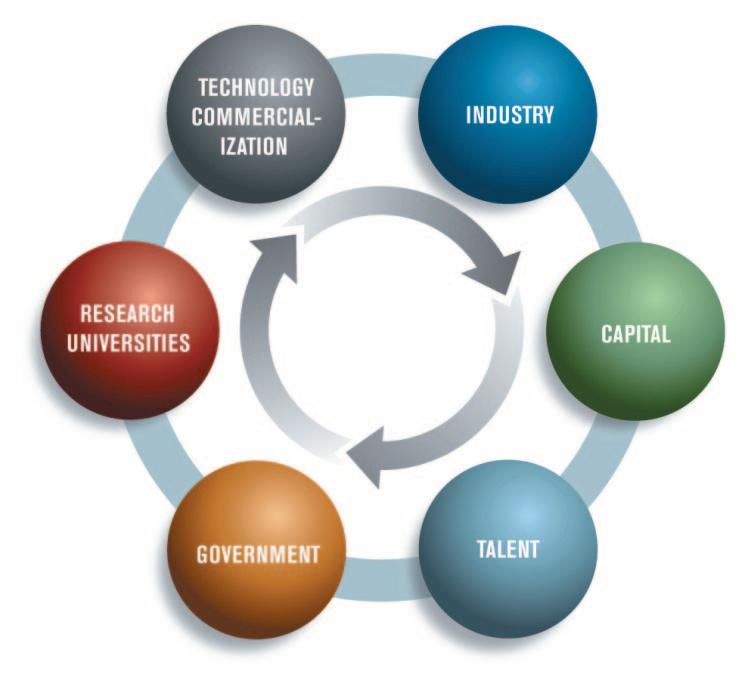
Utah’s Economic Cluster Initiative isdesignedaroundproveneconomicprinciples wherecollaborationamongorganizationsofferssustainableadvantagestolocaleconomies. Basedonbestpracticesandsuccessfuleconomicmodels,Utahiscapitalizingonitscore strengthsandfacilitatingthedevelopmentof clusteredbusinessenvironmentswherethese strengthswillresultinathrivingeconomyand anincreasedstandardofliving.
Governor’s Office of Economic Development • Annual Report 2007 4
UTAH ON TOP OF THE ECONOMIC MOUNTAIN
Is it the General Economy or is it What Utah is Doing to Get There?
Utah Governor Jon Huntsman acknowledges, “Every state and region has its time to be hot. This is Utah’s time to be hot, but there is more to business and life than just being hot.” Using his years of experience in the private sector and in government service, the Governor has made economic development a central theme of his administration. “We need to make it abundantly clear that we are serious about economic development. In the end, this will be what pays the bills for our present and future and provides the greatest opportunities for our people and our Utah companies.” But for this governor just being successful in business is not enough. “It’s all about quality of life,” he continues.


Governor Huntsman and the Utah legislature put the States money where their mouth is. Governor Huntsman and the Utah Legislature added $500 million to the State education budget; the largest one time addition of dollars in Utah’s history. Education improves quality of life and has always been a high priority in Utah. According to the U.S. Census, 89% of Utah residents over 25 years of age are high school graduates, and 28% have a bachelors degree or higher. However, what’s most significant is the average age of both the residents and the workforce. Utah ranks as the youngest and healthiest state in the nation, with a median age of 28.5, compared to the national average of 36.4. The State is actively supporting the recruitment of highly qualified professionals into Utah companies. It is also, aggressively addressing the education of one of the largest groups of K-12 students in the country, now above 500,000 students. These students are the workforce of tomorrow and they want to live where they are growing up.
Education is not the only priority for the state. For the third consecutive year, the State outperformed the nation, in job growth at 4.9% for all of 2006 with 54,000 jobs created, compared to 1.9% for the nation. In 2007 job grow th is up to 5.4%.

In order to sustain this growth rate, Utah educators continue to implement Science, Technology, Engineering and Math (STEM) programs to prepare students in high school for future work in high-technology industries; the high school programs engage with higher education for degreed programs related to “cluster” or “targeted industries.” The Utah College of Applied Technology (UCAT) with eight campuses across Utah trains approximately 60,000 students each year in high-demand, high-wage technical skill programs that include nurs-
Governor’s Office of Economic Development • Annual Report 2007 5
Jon Huntsman, Governor
The Utah State Capital sits on capital hill above the expanding Salt Lake City skyline.
Governor Huntsman and the Utah Legislature added $500 million to the State education budget.
UTAH ON TOP OF THE ECONOMIC MOUNTAIN
ing and health occupations, automotive and diesel mechanics, CAD design, high-tech carbon fiber production and lean manufacturing techniques. Additional, workforce development efforts are coordinated w ith the Utah Department of Workforce Serv ices. Programs include incumbent worker tr aining, and recruiting employees, such as engineers into Utah companies. GOED economic development also works closely with industry associations to foster growth and remain on the leading edge of business development.

Utah’s employment sectors are broadly based.
Utah #1
“MOST DYNAMIC ECONOMY”
– Kauffman 2007 State New Economy Index
➤ #2 “INVENTOR PATENTS”
➤ #2 “E-GOV’T”
➤ #3 “ONLINE POPULATION”
➤ #4 “FASTEST GROWING FIRMS”
The Utah Governor’s Office of Economic Development (GOED) operates with an integrated economic development strategy comprising: university and industry based research; technology commercialization; access to capital; a government supported infrastructure including such things as talent recruitment and development, corporate incentives etc. GOED has programs established for business promotion, growth, creation, and recruitment. GOED also contracts with the private sector in order to expand its effectiveness and re ach with business support programs and initiatives.
“The initiatives allow us to align industry, research universities, capital, talent, technology and government around emerging or mature industry sectors that possess the greatest sustainable competitive advantage,” says Jason Perry, Executive Director of GOED. “The net effect is that these factors combine to create higher paying jobs, strengthen education and maintain a highly trained and efficient workforce which has raised the overall standard of living in Utah,” Perry continues.
GOED has many partners like the Economic Development Corporation of Utah (EDCUtah) a private sector partner contracted to assist in recruiting out of state companies who meet industry
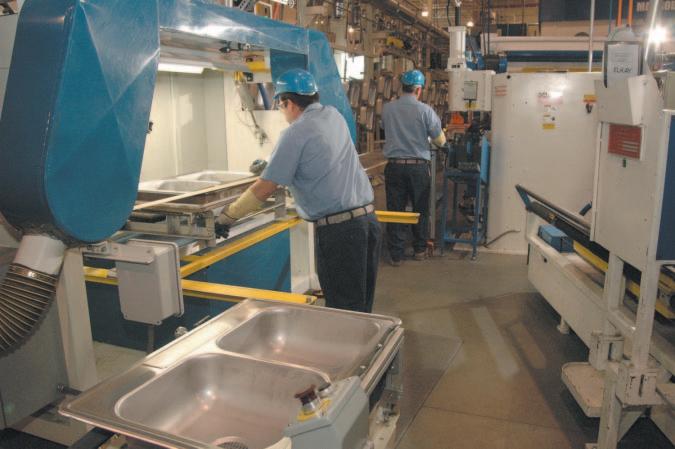
Elkay West
Elkay Manufacturing’s new world-class stainless-steel sink manufacturing facility in Ogden enabled them to double capacity.
Elkay reinvested in Utah rather than moving elsewhere because the existing plant placed first or second in every metric the company looked at.
Governor’s Office of Economic Development • Annual Report 2007 6
160,000 140,000 120,000 100,000 80,000 60,000 40,000 20,000 0
MgmtAgricultureConstructionEducationFinanceHealthCareInformationManagementManufacturingMiningOther Services Public Admin Real EstateRecreationRetailTradeScientific T ransportationTravelUtilitiesWholesale
Admin/Waste
Utah Employment
UTAH ON TOP OF THE ECONOMIC MOUNTAIN
sector needs. The Utah Fund of Funds provides venture capital firms supportive financial services when investing in Utah co mpanies. The SBA Small Business Development Centers (SBDC) trains businesses and their employees in a wide array of management tools. The Utah Manufacturing Extension Partnership (MEP), helps clients increase manufacturing output. “While many states are finding it difficult to compete in the world market, Utah’s manufacturing industry increased last year by several hundred companies, many of which relocated to the productive Utah economy,” states David Sorensen, Director of MEP Utah.
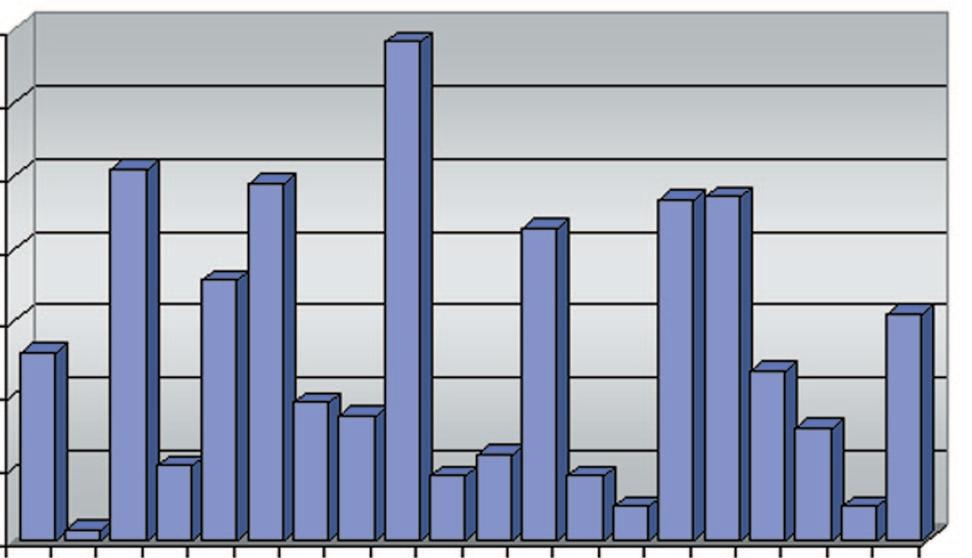

Recognizing that 75% of Utah’s population lives and works in five counties along the Wasatch Range. “There is a need to ensure that the 25% of the population living and working in the remaining 24 counties of the State are able to participate in the “cluster” strategy, ultimately raising their standard of living. We want to ensure economic success is shared statewide,” says Les Prall, with the GOED Rural Development Office. “Within GOED we have a Rural Development team that is identifying innovative ideas for further economic development in rural communities consistent with the targeted “cluster” industries where they make sense,” continues former Utah Senator, Beverly Evans, now a part of the GOED Rural Development Team.
Utah’s economy is broadly based. A part of the economic development strategy is to protect the States economy from any single industry downturn that could damage the entire state. For example, the manufacturing industry comprises 10.2% of Utah’s employment. This industry sector has experienced an increase in job growth every quarter since 2004. The manufacturing industry added over 5,000 jobs from 2005 to 2006, a 4.7% industry employment increase. Utah manufacturing employs around 125,000 workers and creates an additional 300,000 related jobs in the state,” says Tom Bingham, President of the Utah Manufacturers Association. Its workforce is highly trained and productive. Both electricity and natural gas costs in Utah are among the five lowest in the nation. The energy and natural resources sector continues to grow. 2005 Utah coal production was 24 million tons and natural gas production is 275 billion cubic feet/year. The State is encouraging efforts to
Governor’s Office of Economic Development • Annual Report 2007 7
$1,400 $1,200 $1,000 $800 $600 $400 $200 $0 Admin/Waste MgmtAgricultureConstructionEducationFinanceHealthCareInformationManagementManufacturingMiningOther Services Public Admin Real EstateRecreationRetailTradeScientific T ransportationTravelUtilitiesWholesale
Millions
Utah Payroll in millions
Utah still loves its rural roots and maintains many tourism friendly activities such as summer rodeos.
UTAH ON TOP OF THE ECONOMIC MOUNTAIN
review recovery of 500 billion barrels of oil shale reserves in Utah and 11 billion barrels of tar sand reserves in Utah. With a hot economy, the labor pool is tight, but Utah continues to provide a pipeline of qualified employees via its high rate of natural growth of well educated youth and positive immigration numbers; Utah ranked 6th in the nation for its population growth rate of 2.4%.
Utah #2
“BEST STATE FOR BUSINESS”
– Forbes Magazine
Since Utah is the “crossroads of the west,” it has also become a central location for transportation and distribution of all kinds. It has become a primary distribution hub to the western states. Salt Lake City is the meeting point of the three major rail lines leaving Seattle, San Francisco and Los Angeles ports. The confluence of two east/west interstates, I-70 and I-80 with the north/south I-15 interstate in Utah has become a central point of distribution for the Canada/Mexico trade corridor.

IMFlash Technologies Maintenance Corridor Technicians service and maintain equipment without entering the fabrication bays.
Sig nificant expansions, relocations and real estate investments are influenced by proximity and desirability. IMFlash Technologies, a partnership between Intel and Micron is in the midst of a $3-5 billon dollar investment in a new flash memory manufacturing plant in Lehi Utah. The plant is located in the core of Utah’s population center, surrounded by four major universities, adjacent to quality housing and just off of I-15. Many other high-wage and high technology companies maintain manufacturing and research facilities along the I-15 corridor.
Forbes Magazine’s ranking of Utah as the second best place in the nation to do business underscores Utah as one of the hottest business markets in the nation. Many other organizations have recently recognized Utah as a “Top Place for Business,” such as CNBC’s number three ranking, and the Kauffmann Foundation who rated Utah as the nations most dynamic economy.
While Utah rates high in terms of hard statistics, more and more organizations also need to find the intangible. Today, companies are looking for an innovative culture and an unparalleled quality of life. A dynamic culture brings industry and investors together to form the types of industry clusters where manufacturing lives and an economy thrives.
It could only happen in Utah! A unique blend of resources and talent in education, industry and government has allowed CedarEdge Medical, LLC, the possibility to train, mentor, transition and ultimately place nearly 40 individuals as virtual medical coders in rural communities throughout the state. And, this is only the beginning. With our ongoing alliance, the potential is without limits.
Nancy Reading, CEO – CedarEdge Medical, LLC
Allegheny Technologies recently announced a major new manufacturing operation in Utah, following a highly competitive review. “We’re an international company with locations throughout the world to
Governor’s Office of Economic Development • Annual Report 2007 8
UTAH ON TOP OF THE ECONOMIC MOUNTAIN
choose from for expansion,” said Chairman and President of Allegheny Technologies, Patrick Hassey. “We selected Utah for this significant investment, because it is an ideal place to do business. The State provides a wonderfully innovative environment, a fantastic place to live and a supportive government.”
A supportive environment and a highly skilled workforce is what conv inced Barnes Group to expand its proprietary titanium casting technology into a new manufacturing facility in northern Utah, after an extensive search worldwide for a location with a capable workforce and access to the necessary raw materials.
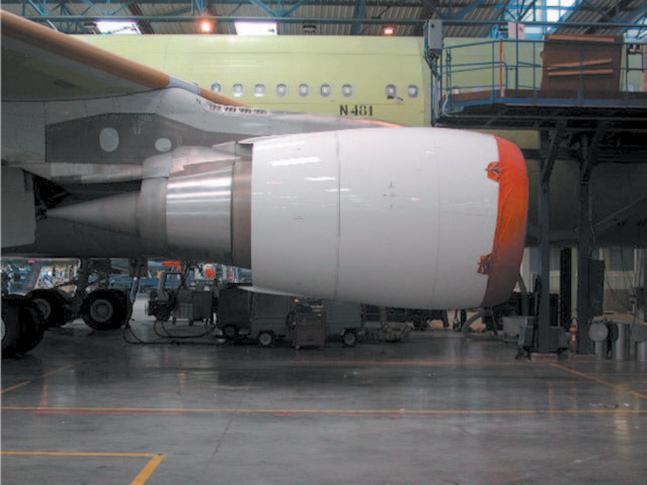
Grow ing its aviation and aerospace cluster, Utah is home to many significant companies who are on the cutting edge of innovation in not only high-tech metals, but composite fiber technology and innovative design. Adam Aircraft has recently opened a manufacturing facility for its new generation of VLJ’s or Very Light Jets and it uses engines from Williams International of Ogden Utah who is recognized in the industry for having developed the highest thrust to weight ratio jet engines in the world.

Co ming back to Governor Huntsman’s issue of “quality of life,” MEP Manufacturer of the Year, Futura Industries, produces custom aluminum extrusions. They demonstrate the result of the public/private partnerships that have benefited Utah businesses and their employees. While Futura has implemented lean manufacturing and other innovative business techniques throughout the company; they have been recognized for their efforts at improved quality of life for their employees. Futura has a full service medical clinic on site for employees and their families. “We believe there is no end destination for Futura Industries in the perfecting of our work culture,” says Sue Johnson, Futura President. Johnson continues, “We could not have made anywhere near the progress we have without the support of the State of Utah and their partners.”
“We could not have made anywhere near the progress we have without the support of the State of Utah and their partners.”
Sue Johnson, Futura President
The early Utah settlers recognized that quality of life can be hampered or improved by the things we use in our every day work/life; and since the business of making things w ith utility, adding value to raw materials, and providing high quality service is the essence of business it was one of the first things to develop in the “Beehive State” in the late 1800’s. The beehive slogan originated because of the recognized value of each individual to the whole. As pioneer settlers determined they needed a way to provide the necessary tools, implements and household items essential for a thriving community
Governor’s Office of Economic Development • Annual Report 2007 9
Aft Pylon Fairing for the Airbus A380, Super Plastic Formed Titanium provided by Barnes group who is building a new facility in northern Utah.
Hexcel, Salt Lake City, is a leading supplier of advanced materials—carbon fiber, epoxy resins and adhesives.
UTAH ON TOP OF THE ECONOMIC MOUNTAIN
away from the main population centers of the East, manufacturing and supportive business became the backbone of the State. Through the years, Utah business has become very high-tech as Utah companies improve design, production efficiency and distribution through the use of modern technology.
Utah’s diverse business base ranging from medical, micro-chip, aerospace, and food to basic metal and high-tech composites has allowed Utah to continue to grow its economy since the early days of statehood. From a highly educated and skilled workforce to innovative business practices and entrepreneurs who develop valuable new technologies, Utah can count on its business community and workforce to continue to provide the highest standard of living and quality of life anywhere in the world. Expect to see Utah on top of the economic mountain for some time to come.

Utah Office of Tourism photos show the diverse mountains of Utah.

Governor’s Office of Economic Development • Annual Report 2007 10
GOVERNOR’S OFFICE OF ECONOMIC DEVELOPMENT PROGRAMS
Governor’s Office of Economic Development • Annual Report 2007 11
TARGETED ECONOMIC CLUSTERS
Focused development on leading Utah industry strengths
Clusters are groups of related businesses and organizations within industry whose collective excellence, collaboration and knowledge base provide a sustainable competitive advantage.
Strong Clusters translate directly into tangible benefits for Utah’s businesses, citizens and educational institutions. In Clusters, businesses have access to suppliers, services, resources, technology and workforce. In addition, related businesses work together to achieve new economies of scale, distribution channels and, ultimately, increased profitability. Universities benefit by direct engagement with industry.
The Governor’s Office of Economic Development (GOED) established the Economic Clusters Initiative as a catalyst to focus people, ideas and resources on our greatest opportunities for success. The initiative allowed us to align industry, research universities, capital, talent, technology and government around emerging or mature industry sectors that possess the greatest sustainable competitive advantage. The net effect is that these factors combine to create higher paying jobs, strengthen education and raise the standard of living in Utah.
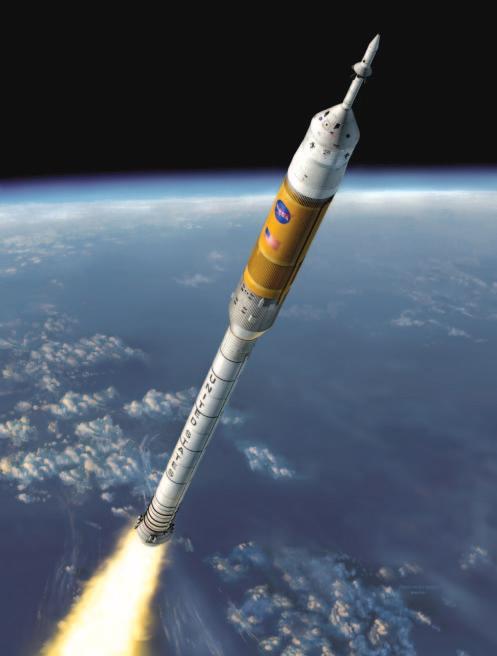
TARGETED ECONOMIC CLUSTERS
Focused development on leading Utah industry strengths:
Aviation & Aerospace
• Advanced Composites
Defense & Homeland Security
• Unmanned & Autonomous Vehicles
Life Sciences
• Personalized Medicine
Outdoor Products & Recreation
Software & Information Technology
Energy & Natural Resources
Financial Services
Upcoming Competitive Accelerators
• Advanced Manufacturing
• Logistics & Distribution
• Nanotechnology
Within Utah we initially established six economic clusters and, this past year, added a seventh. They are: Aerospace; Defense and Homeland Security; Energy and Natural Resources; Financial Systems; Life Sciences; Outdoor Products; and, Software Development and Information Technology. While all seven clusters demonstrated growth this past year, including information technology, this report specifically focuses on four of them.
Av iation and Aerospace
The Aerospace industry within Utah generates revenues in excess of $400 million annually and has been growing at a 10% rate the past several years. Much of the aerospace industry is located in Davis, Weber and Salt Lake counties, as an outgrowth to the defense missions at Hill Air Force Base.
While many sectors within the aerospace industry are projected to experience constant growth, one in particular, advanced composites, is expected to grow exponentially, and Utah is very well placed in this sector.
Governor’s Office of Economic Development • Annual Report 2007 12
Photo courtesy of ATK Utah-based ATK was awarded a $1.8 billion contract in 2007 to develop the first stage of NASA's new launch vehicle Ares I, which is slated to replace the Space Shuttle when it retires in 2010 continuing missions to the International Space Station and later, missions to the Moon.
TARGETED ECONOMIC CLUSTERS
Advanced composites are materials composed of at least two components that work together to create material that is used for applications that require high strength and light weight. Due to its superior strength to weight ratios, markets for advanced composites include aerospace & defense, industrial and sporting goods.
Current and projected employees in the Utah advanced composites industry
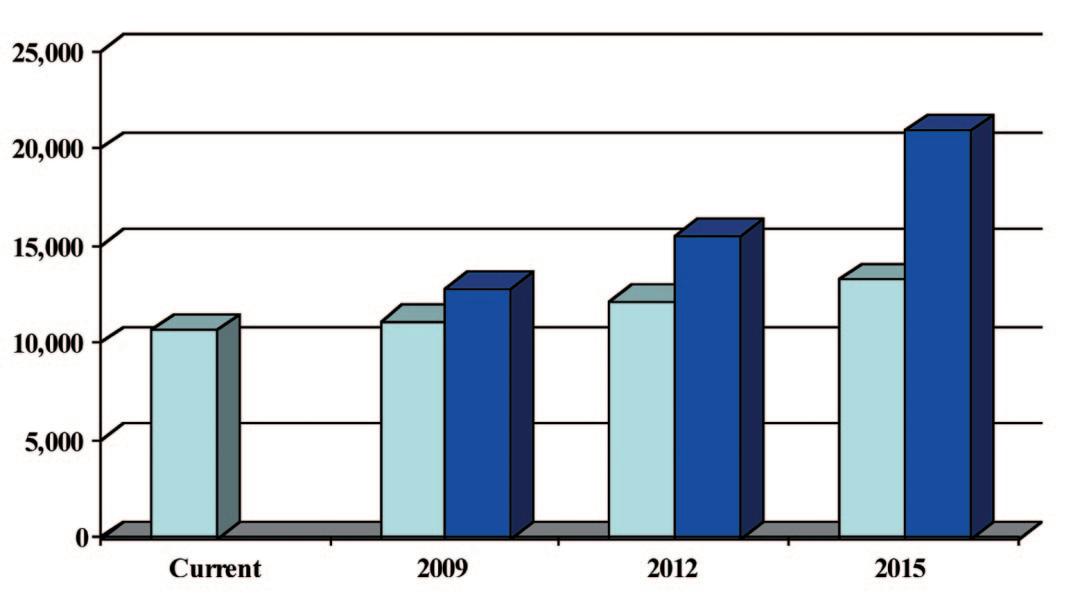
Utah composites companies expect to add 2,600+ jobs with known work. Potential is to add over 10,000 jobs with new work by 2015. Average salary of $50,000 is 41% higher than Utah average wage.
Utah is recognized throughout the national industry as a leader in advanced composites. In fact, the industry essentially grew up in Utah with work begun at the former Hercules Corporation. Today, over 60 Utah companies are involved in the advanced composites industr y. Some of these companies include Hexcel, ATK, Rocky Mountain Composites, EDO Fiber Science, Advanced Composites, Contour Composites, HyperComp, Adam Aircraft, Entec, Goode, McLean Sporting Goods, and others, resulting in Utah having an entire advanced composites supply chain within the state, and we continue to grow.
In a recent survey conducted by GOED, the Utah advanced composites industry expects to grow 400% by 2015 with known workload, which will add a minimum of 2,500 employees, and many expect the ultimate growth to require in excess of 10,000 additional employees.
To address needs of the industry, GOED, along with EDCUtah, has been leading monthly meetings of industry members, academia, Hill Air Force Base and others to determine common issues, particularly workforce availability and training, access to fiber and technological research and development, and develop potential solutions for these issues. This past June, GOED sponsored a booth and had several Utah composites companies join us, at the annual advanced composites conference, SAMPE, in Baltimore. We made numerous contacts of companies across the country who want to move operations to Utah or increase what they already have in the State.
Definition of clusters were determined using relative NAICS codes as chosen by the Governor’s Office of Economic Development and the Division of Work Force Services.
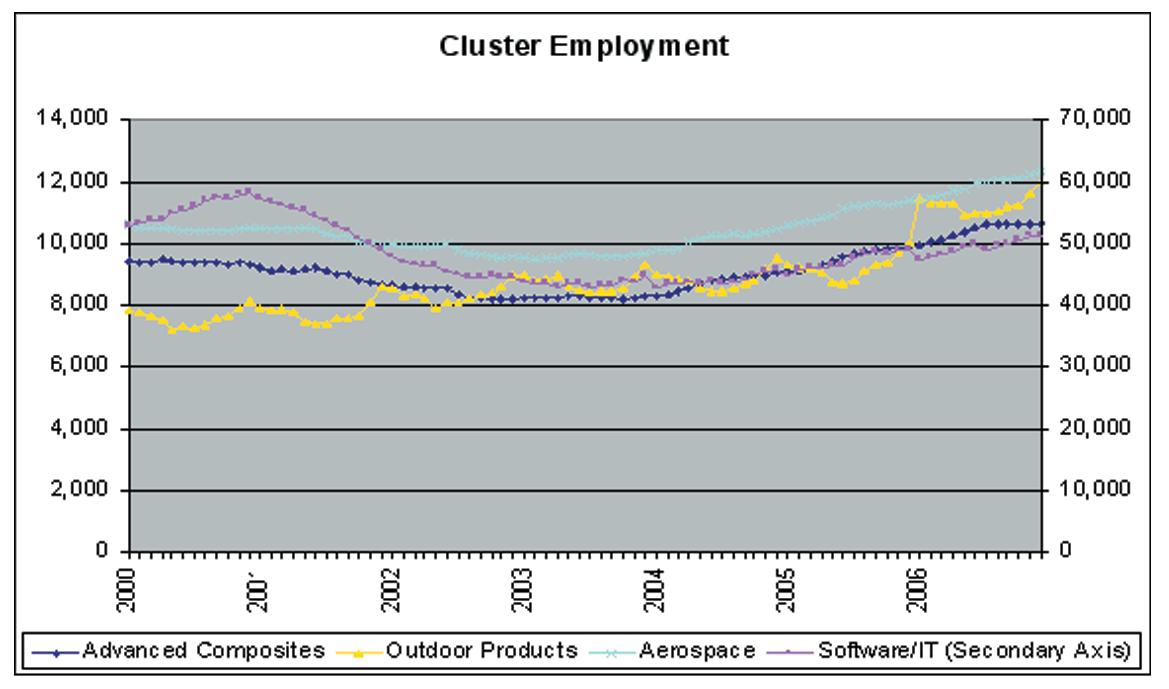
Governor’s Office of Economic Development • Annual Report 2007 13
TARGETED ECONOMIC CLUSTERS
Defense and Homeland Security
The Defense and Homeland Security Cluster leverages Utah’s core competencies in research, industry, military and public organizations to grow our market share. Utah has a long history supporting the defense industry and many companies support military installations within the State, to include Hill Air Force Base, Dugway Proving Ground, Tooele Army Depot and Deseret Chemical Depot.
The Defense market in Utah continues to expand rapidly. It is estimated that the Defense Department spent in excess of $3.7 Billion in Utah in 2005 (the last year for which statistics are available). This represents a $400 Million increase from 2004, a 12.8% increase. We’ve established a goal of securing $7 Billion of defense market share by 2011 and developed a six-point strategy to make this a reality.

Top defense contractors within the State include Nor throp-Grumman, ATK, L3 Communications, Boeing, Lockheed Martin, URS and Booz Allen Hamilton.
Hill Air Force Base is the center-piece of our defense market. The base alone generates close to $3 Billion annually and provides opportunities for hundreds of companies within the State to provide goods and services. GOED works closely with base officials to ensure its continued growth and missions for the future.
One of GOEDS’s key partners in the defense area is the Utah Defense Alliance (UDA). UDA has several goals for the long-term viability of the defense market in Utah, specifically to ensure the strength of Hill Air Force Base now and in the future, look for strategic opportunities across the defense market and economic development. One particular effort that UDA is involved with is to assist potential and existing contractors to be aware of and receive government contracts. Last year the legislature appropriated $250,000 to this effort and appropriated $1 million for the effort beginning July 2007. Partners in this effort include GOED’s Procurement Technical Assistance Center, UDA and their contractor, Logistics Specialty, Inc.
One particular area that we project future growth is Autonomous Systems, vehicles (air, ground or water), that are able to move and react to their environment without human interface. Over the last year great strides have been
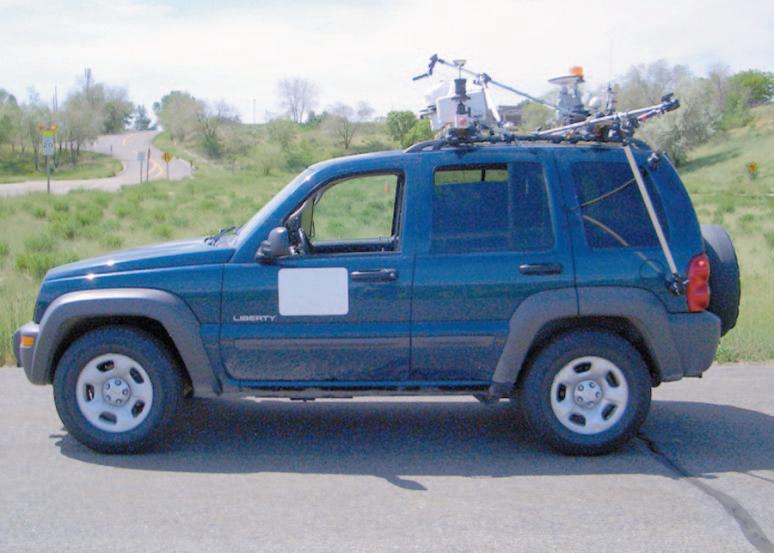
DesignJug’s “Urban Juggernaut” autonomous self-driving robot vehicle, is a semifinalist in the $2 million DARPA Urban Grand Challenge and a leading edge example of Utah’s autonomous systems’ expertise.
Governor’s Office of Economic Development • Annual Report 2007 14
F-35 Lightning II first flight take off. Lockheed Martin inaugurates the first flight of the F-35, utilizing upper wing skin fabricated at ATK in Clearfield, UT.
TARGETED ECONOMIC CLUSTERS
made in this cluster activity. The Cluster initiated and formed a Utah chapter of the Association of Unmanned Vehicle Systems International (AUVSI). Through this chapter, Utah will be able to “market” its Unmanned Systems presence (i.e. its capabilities, facilities, academic expertise, etc) on a national and international stage. GOED (with the participation of EDC Utah and some of Utah’s Unmanned Systems companies) has exhibited at the annual AUVSI conference and exposition. This activity has enabled Utah companies an exposure that they would otherwise not be able to get. One company, Marshall Telemetry, was the recipient of a number of orders for their product, in the amount of $400K as a direct result of participation with GOED at this year’s event.

Predator UAV, provides reconnaissance for Coalition forces in Iraq and Afghansistan, has major components and subsystems delivered by Utah companies. Utah provides the perfect environment for test and evaluation of UAV’s like predator.
Through our GOED efforts over the last year, at least two large companies have registered interest in bringing their Unmanned Systems activities to Utah. One is looking to build components and conduct repair functions within the State and the other is proposing to locate a test and final assembly operation facility here. The key “draw” to Utah is their need for access to the airspace such as the airspace of the Utah Test and Training Range (UTTR) which is controlled by Hill AFB.
Another very exciting development for the Unmanned System initiative for Utah, is that three Utah teams (University of Utah, DesignJug (Sandy, Utah) and Autonomous Solutions Inc (Wells/Logan, Utah) will participate in the qualifications for the Defense Advanced Research Projects Agency (DARPA) Urban Grand Challenge event. This event, which will be held in October/November 2007 is a competition for an unmanned vehicle to navigate a 60 mile course autonomously while obeying traffic regulations and conventions. Only 40 teams across the nation have made it this far in the selection process, and Utah has three of them. This speaks volumes to the expertise in the State for autonomous vehicles.
GOED has been working with two military installations (Dugway Proving Ground and Hill Air Force Base) to promote Utah as the “perfect” environment for Unmanned Vehicle experimentation activities. Dugway and Hill AFB are collaborating to position their facilities as part of a national network of Unmanned Systems Experimentation Environments. This effort has yielded and is yielding success in attracting Department of Defense entities, as well as companies to bring their programs to Utah.
Life Sciences
Dr. Greg Jones, the former State Science Advisor, organized the “Personalized Medicine in Utah” conference on December 6, 2006. The conference featured

Medical devices and pharmaceuticals lead
Governor’s Office of Economic Development • Annual Report 2007 15
the Utah Life Sciences industry.
TARGETED ECONOMIC CLUSTERS
Governor Huntsman, as well as keynote talks by scientific leaders in personalized medicine from Utah research institutions, Johns Hopkins, Duke University, the University of Texas and the Oklahoma Research Institute. It also addressed the business development issues related to personalized medicine, with featured talks by industry and venture firm representatives. The Utah Population Database was highlighted as a resource unique to Utah that connects science and economic development. The conference was well-attended, with over 200 participants.
Governor Huntsman led a Bio-Partnering trade mission to Toronto, Canada on April 23-25. The trade mission was coordinated between the Governor’s Office of Economic Development and the Canadian Consulate in Denver, CO. The mission focused on sharing business opportunities and best practices between Canadian and Utah life science companies. The Governor was accompanied by executives from eight Utah life science companies.
The Governor’s Office of Economic Development was awarded a $5MM, 3-year grant through the US Department of Labor’s Workforce Innovations for Regional Economic Development (WIRED) program in January of 2007. The WIRED initiative focuses on building partnerships that help to promote regional economic transformation that supports the growing Utah life science industry. The partners include representatives from government, higher and public education, industry and community groups that have a shared commitment to supporting and growing the Utah workforce for science, technology and engineering-based industries.

The Outdoor Products industry is diverse, vibrant and growing in Utah.
Outdoor Products
Outdoor Products is our newest designated Cluster.
When you think of the outdoors at the national level, Utah immediately comes to mind. Utah is the hot spot for many sports and outdoor manufacturers, distributors and retailers, many who come here to take advantage of our amazing terrain and educated workforce. With well over 1,000 sports and outdoor products companies in the state, many companies are looking to Utah to house their corporate headquarters and primary operations facilities.
Utah outdoor products companies include Amer Sports, Rossignol, Scott, Backcountry, Black Diamond, Miller Motorsports Park, U.S. Speedskating Association, Descente North America, Goode Industries, Cabelas, 4FRNT, and many others.
Governor’s Office of Economic Development • Annual Report 2007 16
TARGETED ECONOMIC CLUSTERS
63-38f-1901. Military installation projects for economic development
Purpose
To provide information to the Workforce Services and Community and Economic Development Interim Committee with respect to the use and impact of monies distributed related to military installation projects for economic development (Utah Code Section 6338f-1901).
Background
During their 2005 General Session, the Utah State Legislature through Senate Bill 141, recognized potential employment opportunities and the economic significance of federal military installations located within the state. Senate Bill 141, signed by Governor Jon M. Huntsman, March 17, 2005, appropriated $5,000,000 to the Governor’s Office of Economic Development (GOED) to be dispersed for projects that would:
Enhance military value of Utah military installations
Preserve existing workload and employment (over 25,000 jobs)
Create new employment opportunities for Utah citizens
Initial impetus behind Senate Bill 141 was a report commissioned by the Utah Defense Alliance, Inc. (UDA) and completed by Logistics Specialties Inc., of Layton, Utah, which recognized shortfalls in the Department of Defense (DoD) budgeting process which occasionally leaves missions and workloads w ithout necessary funds for equipment purchases resulting in lost employment opportunities at military installations. UDA proposed to the legislature that the state purchase equipment for the identified workloads and gift the same to the USAF thereby bringing additional jobs to Hill AFB.
Funding included in Senate Bill 141 provided an opportunity for the state to partner with Hill AFB and Dugway Proving Ground (DPG) in increasing employment opportunities at both installations.
GOED selected UDA to work with Hill AFB and DPG to carry out the intent of Senate Bill 141. A contract was signed May 17, 2005. In discussions with the Governor’s staff and sponsoring legislators it was determined to allocate the appropriated funds as follows:
$4,500,000Hill Air Force Base
$ 500,000Dugway Proving Grounds
$5,000,000Total
continued on next page
Governor’s Office of Economic Development • Annual Report 2007 17
TARGETED ECONOMIC CLUSTERS
Progr am Success
The investment of $5,000,000 continues to enhance the capabilities at both Hill Air Force Base and U.S. Army Dugway Proving Ground, adding significantly to the military value of the installations. Both Hill Air Force Base and U.S. Army Dugway Proving Ground officials confirm that the projects funded by the Military Installation Partnerships legislation (Senate Bill 141 of the 2005 General Session) are on-track to create the jobs originally projected. In fact, Dugway Proving Ground has already created 20 jobs during the first half of 2007 and projects hiring an additional 17 which will equal 37 jobs, 12 over the original projection The Utah tax-payers are benefiting by the addition of 613 high-paying skilled and professional positions with an estimated annual payroll of $32,775,000.
Governor’s Office of Economic Development • Annual Report 2007 18
NumberAnnual PayrollAccumulative Payroll YEARJobs CreatedLow RangeLow Range HillAFB 2006130$6,500,000$6,500,000 20071005,000,00011,500,000 2008753,750,00015,250,000 2009502,500,00017,750,000 2010502,500,00020,250,000 2011432,150,00022,400,000 20121408,875,00031,275,000 Total-HillAFB58831,275,000104,765,000 DPG 2007251,500,0001,500,000 2007-21129,000,000 Summary Totals613$32,775,000$113,765,000
Summary of Projected Jobs and Payroll
BUSINESS AND TECHNOLOGY PARKS
The Business & Technology Parks Program’s primary goal is to partner with industry to develop business and technology parks to facilitate technology commercialization, business expansion, and business recruitment.
These tech parks will act as a place where university-related technology commercialization can occur, serve as a location attractive to corporations relocating to the State, and provide a place where local companies can locate to cross-pollinate with other key industries. As such a destination, they need to have the size, scope and look and feel akin to leading technology centers such as Silicon Valley, Northern Virginia, and Research Triangle Park.
The University of Utah Research Park, arguably the best example of a successful park in the State, has been a key driver of the State’s economy for the past 30 years, not only by creating a large number of high-paying technology jobs, but by spawning new technologies and spinning out new companies to commercialize that technology. Research Park has also established Utah as a leading center in the health sciences.
The state will leverage unique public and private partnerships to promote tech parks, including partnerships with Salt Lake County, the local municipality where the park is located, private developers, the University of Utah and Salt Lake Community College.
Financing for tech parks may come from a combination of private-sector and public sources, including office developers, the State and Salt Lake County. Also involved in project discussions are Envision Utah, Wasatch Front Regional Council, the Utah Department of Transportation, the Utah Transit Authority and local governments.
As we promote new business and technology centers for the state, one of our goals is to minimize the need for new infrastructure. Access to light rail and commuter rail, and a location that will not require major new roads are key factors as we work to cluster our employment into regional nodes and reduce commuting costs, travel times and pollution.
The West Side Development
Supporting the development of business and technology parks that will become Utah’s future centers of employment and innovation. HAFB West Side Development
The Business and Technology Parks Program already has helped produce a major win for the state by participating in negotiations with the Air Force, Hill Air Force Base and other interested parties to help the West Side Development get off the ground. The WSD will turn 550 acres along I-15 at the west end of Hill Air Force Base into a business and tech center with a potential for over 5 million square feet of office and industrial space. We believe the WSD is ideally suited to
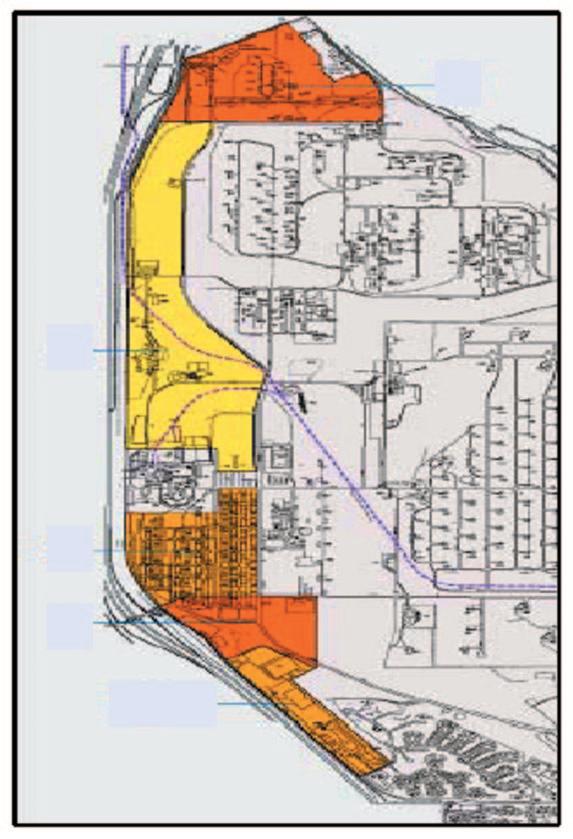
Governor’s Office of Economic Development • Annual Report 2007 19
BUSINESS AND TECHNOLOGY PARKS
support the state’s clusters strategy—particularly because of its proximity to key companies in the aerospace, defense and homeland security, and advanced composites. In August 2007, in a nationwide competition, the Air Force selected Utah’s Woodbury Corporation as the lead developer for the West Side Development, highlighting the expertise and firepower local developers have, and enhancing the overall benefit of the project to the state. Land for the West Side Development will be let out in long-term ground leases to the master developer who, it is envisioned, will pay by constructing buildings for Hill Air Force Base as payment in kind. This payment arrangement is attractive to the state because it helps solidify Hill’s standing as the leading Air Logistics Center in the U.S.

Other Initiatives
Draper/Bluffdale Tech Center
The Business and Tech Parks Program is also working on a proposal for a major mixed-use tech, residential and commercial center at the south end of the Salt Lake Valley on state land adjacent to the state prison. This site has been described by real estate industry leaders as “g round zero” for the state’s future economy. The site has excellent access to both Salt Lake County’s and Utah County’s labor forces. Many tech companies tell us the site would be ideal for companies attempting to attract employees from as far north as Farmington and as far south as Payson. Also, with its location next to the intersection of two freeways and with commuter rail station planned for the site, the site has immense potential as a transportation hub and commercial and employment center. The market appears to agree. Since summer 2005, land values in the immediate area have skyrocketed from $2.50 per square foot to a range of $8-$17.25 per square foot.
The Business and Tech Parks Program is also working with the ports of Oakland and Los Angeles/Long Beach to define the parameters for a possible “inland port” that would act as a major logistics hub for the western United States. The logistics hub would ideally include a cargo airport and customs facilities. This logistics hub would capitalize on three macro trends: the dramatic increase in rail traffic in the U.S., the rapid rise in the value of air cargo shipments from Asia, and the increasing cost of doing business—both financial and regulatory—in California and elsewhere on the West Coast. With our location as a rail hub and with our close proximity to California by air, we believe such a hub might have a significant role in the state’s future economy.
Governor’s Office of Economic Development • Annual Report 2007 20
Draper Development
CENTERS OF EXCELLENCE (COE)
Investing State matching dollars to commercialize research university technologies. Over 2,000 Utahns employed by Centers of Excellence spin-out companies.
This year was an excellent year for the Centers of excellence program. The highlight of the year included 8 companies (spinouts) started this year which licensed technology from Centers supported by this program. These spinouts include 6 companies emerging from the University of Utah and one each from Utah State University and Brigham Young University. In the Life Sciences sector, Larada Sciences, Navigen, and Philotek, Inc. are all new companies in our landscape. Nano-Oxides is a startup in the material sciences industry, with an obvious emphasis in nanomaterials, and in the IT sector, Vistrails, Dynamic Screening Solutions, Apollo Acoustics and State of RT are all companies that are licensing technologies supported by Centers of Excellence funding.
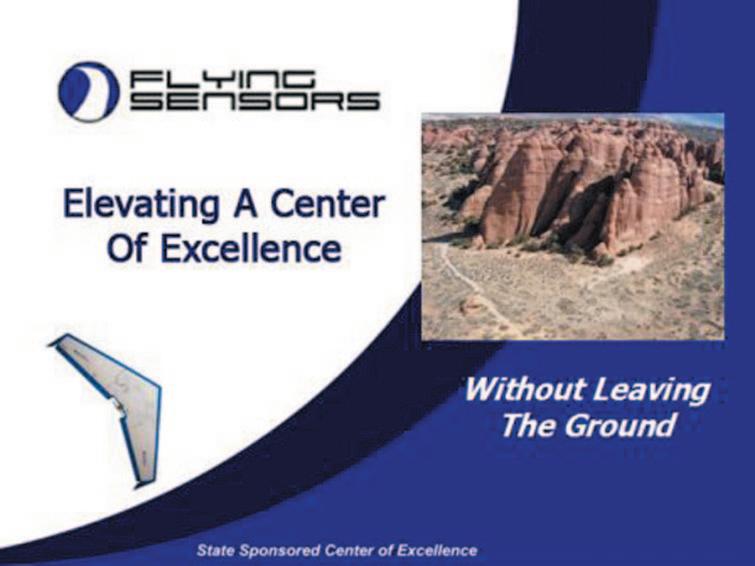
“I see COE providing the essential bridge to motivate people to take the necessary risk to spin research technologies out into industry.”
—Bob Carter, CEO, Flying Sensors
An important element of all of these emerging companies is the key role that the Centers of Excellence Business Teams played in their formation and early accomplishments. This pairing of seasoned technology business executives and serial entrepreneurs with some of the best university developed technology in the State has proven very effective in enhancing the success of the early stage company development. Our professors frequently mention the high caliber of individuals that we have attracted and the tremendous value that these business team members contribute to the success of the program.
The Centers of Excellence program celebrated two decades of supporting economic growth in Utah with the publication of a 20th Anniversary report, available online. Over the first 20 years of the program, technologies supported by the Centers of Excellence Program have resulted in more than 200 license agreements, and at least 126 Utah-based companies have been created to license and market technology fostered by the program. 55 of these spinouts are still “alive” in Utah, three are alive out of State, and another 11 have been acquired and moved out of state. As of February 2007, these Utah companies directly employ over 2035 persons in the state, at an average salary over $65,000. Some well-known firms that have been assisted by the Centers of Excellence program include Myriad Genetics, Inc. (MYGN), Sonic Innovations, Inc. (SNCI), Moxtek, Cimetrix, and Autonomous Solutions. Emerging successes include InfoWest, Live Wire, Andigen and Rocky Mountain Composites. Startups just emerging from the Centers program in the past two years include Flying Sensors, Wasatch Microfluidics, and Glycosan BioSystems. These firms are among the many companies strengthening Utah’s economy through technologies developed at Utah’s colleges and universities.
The Centers of Excellence Program has undergone significant enhancements in the 2006-07 fiscal year to prepare it for the next two decades of success. During the past year, the program evaluated the feasibility of the concept of making grants to Licensees in order to make the transition out of the lab and into a
Governor’s Office of Economic Development • Annual Report 2007 21
CENTERS OF EXCELLENCE (COE)
successful venture more likely. A Licensee is a company which licenses a university developed technology in order to take it to market. The program provided small grants to two licensees, Flying Sensors and Glycosan BioSystems on an evaluation basis for 2006-07. During the 2007 Legislative session, GOED approached the Legislature to make permanent changes to the COE statute in order to call out this type of program on an ongoing basis based on the tremendous success these funds supported at both companies. Both CEO’s testified to the legislature of the value of these grants to their businesses, which allowed them to quickly secure additional capital and sales and to move their businesses rapidly forward. Their success helped the Legislature support these statutory changes.
Because of these excellent results, House Bill 125 was sponsored by Rep. Br adley Daw, with Senate sponsor Senator Sheldon Killpack, to permit grants to licensees of University developed technologies. In addition, the statute was clarified to more fully instantiate the Business Team Program, which has proven so important to the success of the process of launching these technologies into the marketplace.
Also new this year, based on changes to statute in the 2005-06 Le g islative session (SB 112), which permitted more flexible matching funds requirements for non-doctoral granting schools, the program received proposals from 3 non-doctoral granting institutions and two proposals received funding, Southern Utah University and the College of Eastern Utah.
MedQuest/Worldheart
“I recently sold the company that I co-founded (MedQuest Products Inc.) to a publiclytraded company, WorldHeart. My company was a spin-off of the Center for Artificial Hearts at the University of Utah, which is a Distinguished Center of Excellence and has obtained COE funding/support since 1988 for both Artificial Hearts (’88’92) and Ventricular Assist Devices (1 yr in the mid90s).This early support has played a role in our success so far: from Mar-June 2006 we had our first successful patient experience with our revolutionary VAD...”
— Pratap Khanwilkar, PhD, MBA, VP: Rotary Systems & Business Development Worldheart, Inc.
With these changes in hand, the annual selection process for the 2007-08 fiscal year was expanded to include Licensees. There were 41 university proposals, and 23 Licensee proposals, including the 9 “companion” Licensees, where both the university team and the Licensee were requesting funds as part of the bridge between university and company. The funding requests of proposals received this year totaled $10,050,656, more than 3 times the COE budget of approximately $3 million.
After completing 55 separate review meetings, the final recommendations for funding include 9 Licensees, 3 of which had companion Centers which were also recommended for funding. Another 8 standalone University Centers were recommended for funding, for a total of 11 university Centers, and a final 8 university teams were recommended to receive Business Team support, which is intended to develop a better understanding of the market before further grants are made. This totals 28 teams, and 25 different technologies, selected from the Centers of Excellence program, with 20 selected for significant development funding.
Governor’s Office of Economic Development • Annual Report 2007 22
CENTERS OF EXCELLENCE (COE)
The Stepping Stones to Job-Creating Companies
This is a graphic that demonstrates the appropriate role of the COE Licensee grants. These are not intended to replace private capital, but to augment it. In cases where Licensee applicants this year either had received actual venture capital or had projected revenues in excess of $1million per year, the council was very clear that these were not appropriate uses of the COE Licensee grant program. In cases where the team had been able to raise or was in the process of raising angel funds, the COE Licensee grants were deemed entirely appropriate and most of the Licensee grants were made in conjunction with angel funding as the required 1:1 matching funding.
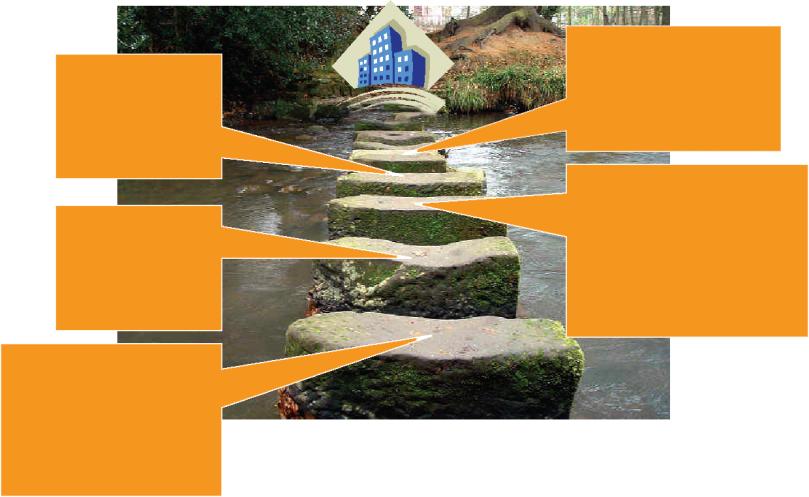
The Centers of Excellence program plays a unique role in helping to grow sophisticated technologybased companies in our state. By filling funding gaps and providing experienced business teams, this program is crucial to effectively commercialize technology from these institutions. Two CEO’s of Licensees are quoted below and provide insights into the benefits provided to our economy by the Centers of Excellence program.
Fly ing Sensors
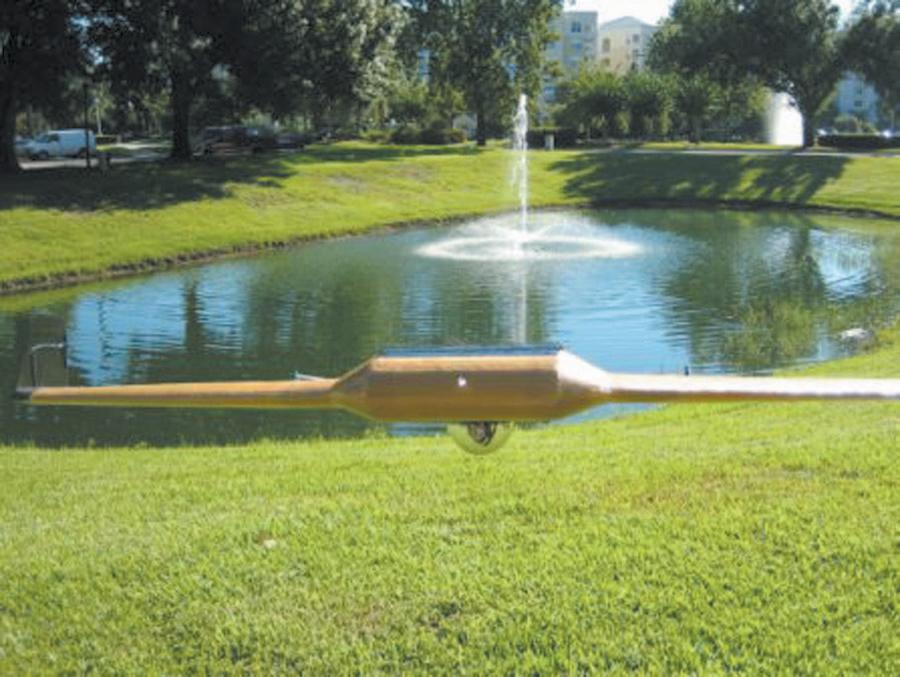 —Bob Carter, CEO, Flying Sensors
—Bob Carter, CEO, Flying Sensors
Flying Sensors is adapting unmanned aerial vehicles, originally designed for military use, to commercial applications such as real estate, film production, air quality monitoring and pipeline monitoring.
The Centers of Excellence (COE) program has been one of the key stepping stones to launching Flying Sensors... Most UAV work was focused on the military and this left a great opportunity to integrate existing technology into a new vertical market. ...I have been an entrepreneur of many different startups. I see COE providing the essential bridge to motivate people to take the necessary risk to spin research technologies out into industry. I am proud to be associated with this program and lead the way for other future companies.
Governor’s Office of Economic Development • Annual Report 2007 23
Angel Capital
Centers of Excellence University Research and Technology (Federal, Corporate, USTAR) Venture Capital (including Fund of Funds)
Friends & Family Funding and COE Licensee SUCCESS
CORPORATE RECRUITMENT AND STATE INCENTIVES
Investing in targeted business growth and job development.
The Corporate Recruitment and State Incentives Program helps GOED fulfill its mission by recruiting headquarters and other companies to Utah that have strategic value to Utah’s economy. In addition, GOED incents business expansion and retention. These companies are able to create new, and higher-paying jobs that help diversify the state economy, increase the tax base, attract and retain top-level management, and encourage graduates of in-state universities to remain in Utah and improve the standard of living of its citizens.
To attract new companies to the state, the program offers incentives such as tax increment financing mechanisms and low-cost borrowing. These incentives are often targeted at a specific goal. EDCUtah, one of GOED’s key partners in its recruitment efforts, helps administer programs to assist in applying for incentives and making the relocation process as smooth and easy as possible.
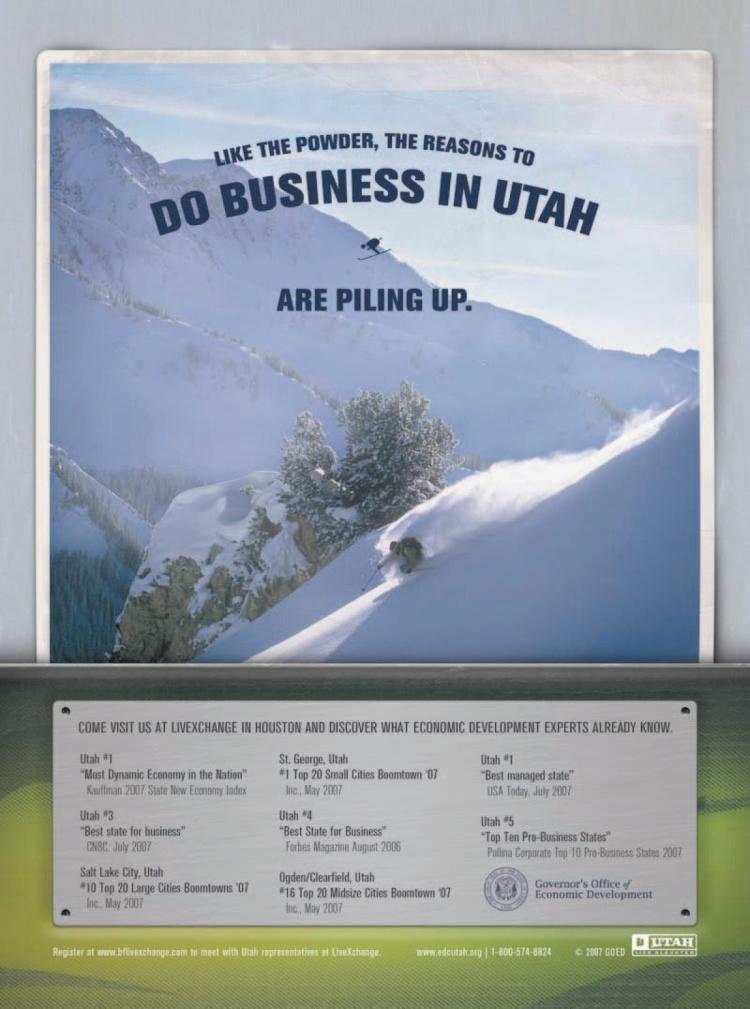
Ad placed in Business Facilities Magazine reaches prime site sector leaders when looking for great places to locate companies and branches.
The recently implemented Rural Fast Track Program provides an efficient way for existing, small companies to receive incentives for creating high paying jobs in the rural areas of the state to further promote economic development. Under this program, 20% of the Industrial Assistance Fund may be used to incent companies to expand in rural Utah.
A unique feature of Utah’s Business Incentives is that funds are awarded on a post performance basis minimizing risk and assuring that there is a return to the state and citizens of Utah.
Commonly used incentives:
• Economic Development Zone Tax Increment Financing (EDTIF)
A post-performance tax rebate up to 30% of new state revenues consisting of sales, corporate, and w ithholding taxes paid to the state.
• Industrial Assistance Fund (IAF)
A job-creation fund paid on a post performance basis, established in 1991 to encourage the creation of good jobs in the State of Utah.
• Economic Opportunities (EO)
State-funded monetary assistance to projects furthering state economic interests. Twenty percent of the IAF is designated for this purpose.
Governor’s Office of Economic Development • Annual Report 2007 24
CORPORATE RECRUITMENT AND STATE INCENTIVES
• Rural Fast Track Program (RFTP)
Small companies in Rural Utah may be eligible for incentives for creating high paying jobs. Twenty percent of the IAF is designated for this purpose.
• Rural Broadband Service Fund
A restricted account to be used for grants to providers for deploying broadband service in Rural Utah areas.
• Mot ion Picture Incentive Fund (MPIF)
The Motion Picture Incentive Fund’s purpose is to attract film production with a post-performance rebate plan of 15% of total dollars left in the state.
Specialty incentives:
• Aerospace Aviation Tax Increment Financing (AATIF)
The Aerospace Aviation Tax Incentive was created by the State of Utah Legislature in 2003 to encourage the development of the Aerospace Ecosystem.
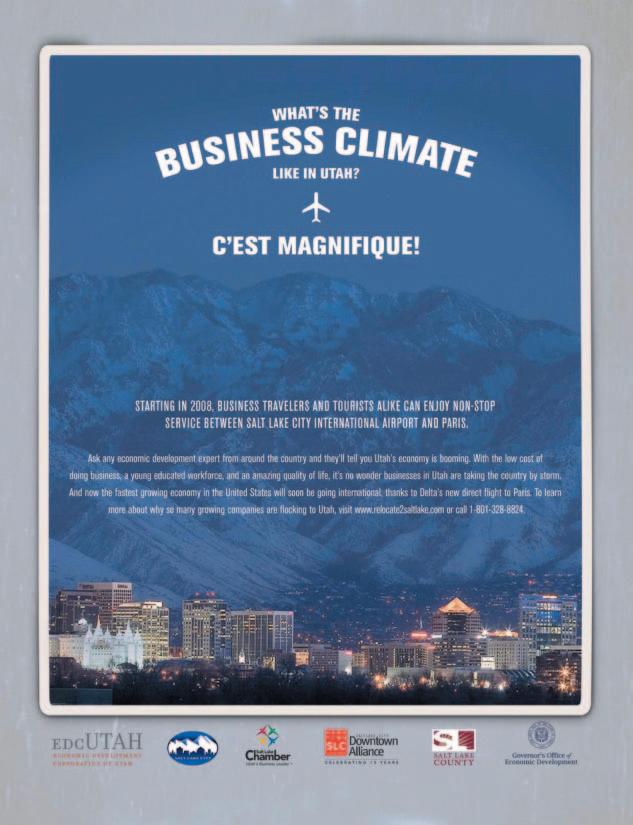
Ad placed in Sky Magazine in support of a 28 page section promoting Utah as a great place to do business and announcing a daily non-stop to Paris.
• Custom Fit Training (administered through local communities)
Custom Fit training money is used to help companies train their employees and is administered generally through state colleges and state applied technology centers.
• Enterprise Zones (incentive paid by local communities)
Under the program, certain types of businesses locating to, or expanding in a designated zone may claim tax credits provided in the law.
• Private Activity Bond (PAB) (administered by the Department of Community and Culture)
The Private Activity Bond is Utah’s tax-exempt bonding authority creating a lower cost, long-term source of capital under the Federal Tax Act of 1986.
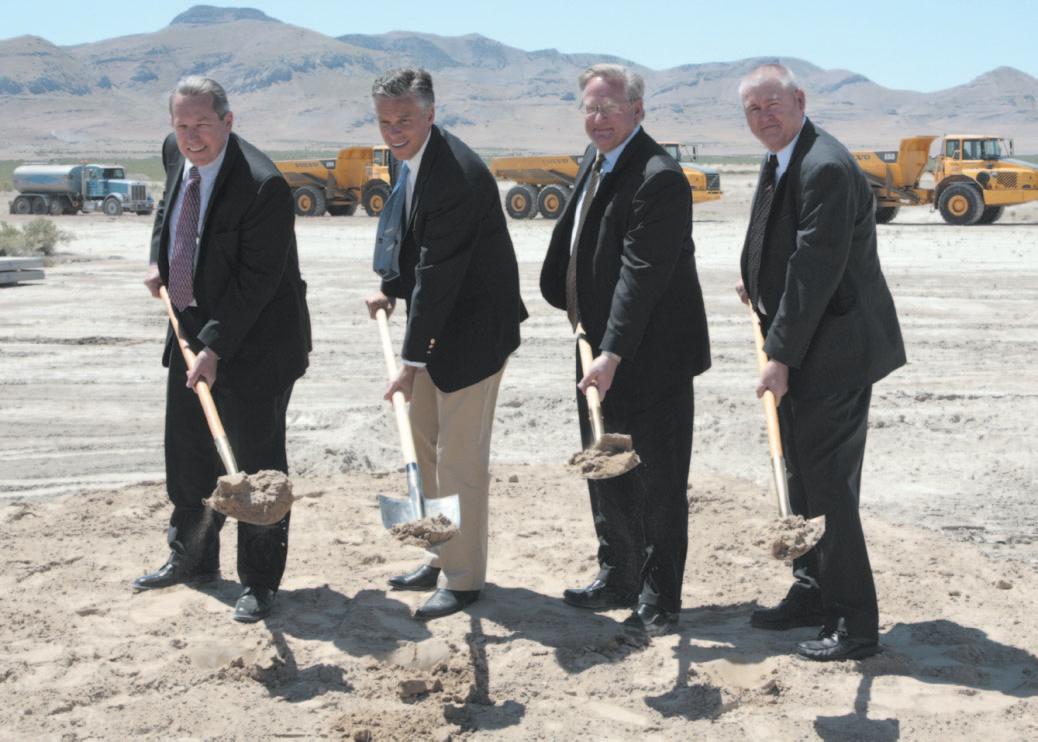
Governor Huntsman helps Allegheny Technologies break ground on their new facility.
• Recycling Zones (incentive paid by local communities)
In 1996, the Utah Legislature created the Utah Recycling Market Development Zone Program which focuses on recycling as an economic development tool.
Governor’s Office of Economic Development • Annual Report 2007 25
CORPORATE RECRUITMENT AND STATE INCENTIVES
Headquarters Recruited to Utah: (theprojectednumbersareovera10yearperiod)
Amer Sports (Salomon, Suunto, Atomic)
Jobs=230
ProjectedNewStateRevenue=$26,451,000
ProjectedCapitalInvestment=$3,250,000
Backcountry.com
Jobs=654
ProjectedNewStateRevenue=$35,279,000
ProjectedCapitalInvestment=$4,874,000
ST Paper
Jobs=140
ProjectedNewStateRevenue=$13,974,000
ProjectedCapitalInvestment=$170,000,000
Syracuse Castings West
Jobs=89
ProjectedNewStateRevenue=$1,950,000
ProjectedCapitalInvestment=$1,590,000
Companies Incented using EDTIF and/or IAF during Fiscal Year 2006-07 (Including Headquarters)
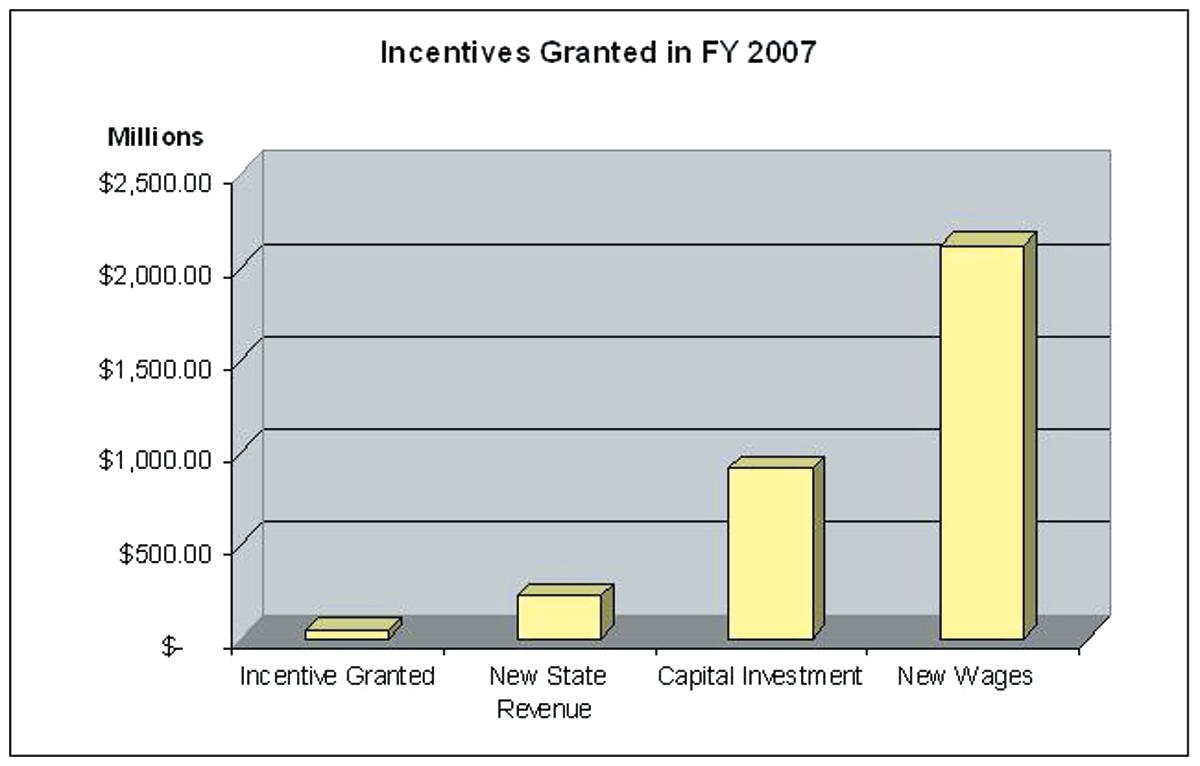
Companies=15
Jobs=4224
IncentivesGranted=$43,114,000
ProjectedNewStateRevenue=$224,784,000
ProjectedCapitalInvestment=$916,264,000
ProjectedNewWages=$2,110,600,000
Governor’s Office of Economic Development • Annual Report 2007 26
CORPORATE RECRUITMENT AND STATE INCENTIVES
63-38f-2006 Report to Workforce Services & Economic Development Interim Committee
1.Total number of grants and loans awarded in Fiscal Year 2007
There were six projects representing $5,450,000
2.Description of IAF and Economic Opportunity projects:
•Amer Sports: Standard IAF Grant $2,500,000; to relocate and consolidate other entities as a new headquarters in Ogden
•Barnes Aerospace: Standard IAF Grant $1,000,000; to relocate to new Ogden facility
•Cedar City: Economic Opportunity Grant $400,000; build fiber optic network
•Salt Lake Convention and Visitors Bureau: Economic Opportunity Grant $250,000; retain and promote the Outdoor Retailers Summer Marketplace tradeshow
•Smith Sport Optics: Standard IAF Grant $300,000; $150,000 for facility upgrade, $150,000 for 60 new jobs
•U.S. Foodservice: Standard IAF Grant $1,000,000; to purchase land and building
3.Unpaid IAF commitments
• Standard IAF committed $16,214,135 representing 34 companies
•Economic Opportunities committed $987,142 representing 3 projects
4.IAF grants and loans awarded that have resulted in economic development
•There are 35 active IAF commitments (including 1 Economic Opportunity) representing 8,784 projected new jobs
• 30% of the projected jobs, or 2,641 have been created
• 11 projects are pending their 1st disbursement
•2 out of 3 Economic Opportunity projects were fully disbursed
5.Other issues relating to this part as determined by the Workforce Services and Community and Economic Development Interim Committee
None
(Continued on next page)
Governor’s Office of Economic Development • Annual Report 2007 27
CORPORATE RECRUITMENT AND STATE INCENTIVES
6.Economic Development Tax Increment Financing (EDTIF) Incentives Offered during FY 2006-07.
U.S. Foodservice
Charlotte Pipe
Dannon .
Fresenius .
Amer Sports (3 Headquarters)
ICU Medical
Barnes Aerospace
Backcountry.com (Headquarters)
ST Paper (Headquarters)
Sy racuse Castings West (Headquarters)
Malnove
Air Liquide
Nor th American Pipe
Both Rural Broadband and Fast Track Programs were authorized by the Legislature effective July 1, 2007, they were not FY 2006-07 programs.
63-38f-2305 Rural Broadband
1.Metrics
• Established policy and procedure - pending committee decision
•Created an application and review committee
•Posted all information on GOED website
•Contract forms created
•No applications received in Fiscal Year 2006-07
2.Four projects have been received from local telecommunication providers and one master application including 42 projects has been received from a major telecommunication provider.
63-38f-903.5 Rural Fast Track Program
1.Metrics
• Established policy and procedure
•Created an application and review committee
•Posted all information on GOED website
•No applications received in Fiscal Year 2006-07
2.Five applications have been received and are in process.
Governor’s Office of Economic Development • Annual Report 2007 28
. . . . . . . . . . . . . . . . . . . . . . . . . . . . . . .EDTIF/IAF
. . . . . . . . . . . . . . . . . . . . . . . . . . . . . . . .EDTIF
. . . . . . . . . . . . . . . . . . . . . . . . . . . . . . . . . . . . .EDTIF
. . . . . . . . . . . . . . . . . . . . . . . . . . . . . . . . . . .
.EDTIF
. . . . . . . . . . . . . . . . . . .EDTIF/IAF
. . . . . . . . . . . . . . . . . . . . . . . . . . . . . . . . . .EDTIF
. . . . . . . . . . . . . . . . . . . . . . . . . . . . . .EDTIF/IAF
. . . . . . . . . . . . . . . .EDTIF
. . . . . . . . . . . . . . . . . . . . . . .EDTIF
. . . . . . . . . . .EDTIF
. . . . . . . . . . . . . . . . . . . . . . . . . . . . . . . . . . . . .EDTIF
. . . . . . . . . . . . . . . . . . . . . . . . . . . . . . . . . . .EDTIF
. . . . . . . . . . . . . . . . . . . . . . . . . .EDTIF
ENTREPRENEURIAL DEVELOPMENT: BUSINESS RESOURCE CENTERS
Creating a supportive business climate as well as training opportunities for today’s great ideas and tomorrow’s business success.
The Business Resource Center Program is focused on increasing the number of successful businesses w ithin the State of Utah.
Plan
This past year GOED partnered with various members of industry, service providers, academia and public officials to determine the way-ahead for the Business Resource Center Program. This very talented group of individuals donated their time and contributed their expertise to develop a plan for reducing the number of business failures in the State, increasing the sustainability of new and existing businesses, and increasing awareness of and access to business resources available throughout the State.
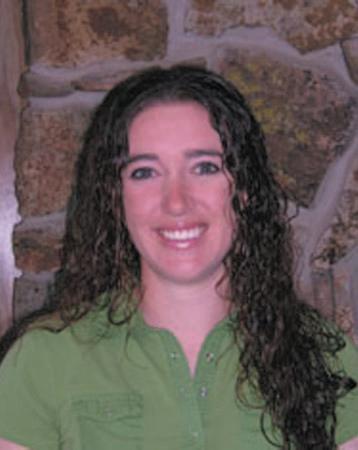
“Wayne County’s great business environment is enhanced by resource partners working together for the good of the businesses they serve. When resources come together small businesses prosper.”
Jodi King, Director of Wayne County Economic Development
The plan proposed encourages local flexibility and customization, recognizing that each area of the State is different, and, to be effective, their must be local stakeholders involved. The program will work from a set of criteria that each center must attain in order to become certified. It will focus on coordinating the efforts of local service providers and enabling businesses to tap into a broad statewide network of support, recognizing that not all services will be physically located at every place, but can be made available through either personal contact or on-line. It will increase access to a statewide network of service prov iders, industry leaders, capital providers and information. The plan does not focus on duplicating any services already being provided nor as a replacement for any existing reporting systems.
The plan is still being worked, but the potential benefits are maximizing the use of available services and resources, access to practical industry expertise and improving success rates for new businesses within Utah. It is anticipated that legislation will be brought forward to establish additional Business Resource Centers during the 2008 legislative session.
Governor’s Office of Economic Development • Annual Report 2007 29
FILM COMMISSION
Marke ts the state for motion picture, television and commercial production.
The Utah Film Commission markets the entire state as a location for film and commercial production and promotes the use of Utah support services and professionals. The film commission is a client driven program, which services inter national, out-of-state production companies, in-state production companies and Utah support services and crew.
MPIF:
The Motion Picture Incentive Fund is a 15% rebate on Utah expenditures for an approved production, with a cap of $500,000 per project and a minimum spend of $1 million in the State of Utah.
High School Musical
2
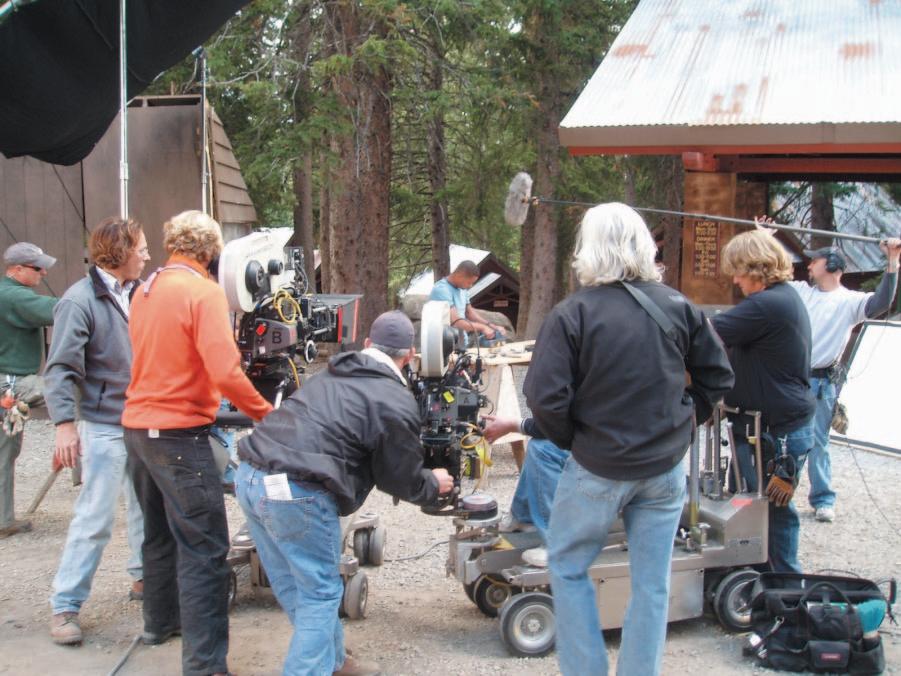
Film Festival Economic Impact: Sundance:$59,000,000
Slamdance:$14,350,000.00
Total:$73,350,000.00
Production Economic Impact
Features/Independent/CableFeatures
23featurefilms
Total:$28,072,873.00
Television: 4partsofTVseries
5partsofrealityTVseries
Total:$610,500.00
Commercials/Videos/Industrial/ Documentary/Shorts/Stills
69Commercials
Total:$5,386,045.00
Grand Total: $107,419,418.00
Jobs created
1,515
Production Days
922
The highly anticipated sequel to the Disney Channel’s Original Movie, High School Musical premiered on August 17, 2007. The cable feature was shot entirely in Salt Lake City and St. George, Utah. High School Musical 2 scored 17.24 million viewers, making it the most watched cable feature of all time. It more than doubled the viewership of the first movie, which drew 7.7 million in 2006. The soundtrack sold 615,0002 in its first week making it the second-biggest opening sum of the year. The first High School Musical soundtrack was the biggest-selling album in the United States in 2006, topping the chart numerous times last year and selling 4.1 million copies to date. Emmy Award Winning Director, Kenny Ortega said, “Who w ould of thought we could produce something for so little that would reach so many? ...I will always be thankful to Disney for allowing me to make the film with Don Schain and all of you in Utah. In my opinion (Utah is) one of the most creatively thriving communities in the country.”
Pe o ple Magazine created a cover-to-cover Special Collector’s Edition for High School Musical 2. The issue gives Utah a great deal of free publicity and encourages
Governor’s Office of Economic Development • Annual Report 2007 30
The set of Daddy Day Camp, Camp Tuttle, Big Cottonwood Canyon, Salt Lake County.
FILM COMMISSION
tourism for the State. The magazine highlights local restaurants, spas and things to do in Utah. It also features local cast members Ryne Sanborn, Oleysa Rulin and Kaycee Stroh along with behind-the-scenes perspectives of the shoot on location at East High School in Salt Lake City and Entrada Country Club in St. George. Both High School Musical 1 &2 were recipients of the MPIF.
2007AmericanPastime5525$152,000$1,900,000
2007Weiners6030$200,000$2,625,510
2007HalloweenTown49425$250,000$2,617,350
Governor’s Office of Economic Development • Annual Report 2007 31
State
einers6030$200,000$2,625,510
HighSchoolMusical2*11030$500,000$5,200,000 744189$1,527,000$17,592,860 FiscalCrew JobsProductionIncentive YearProduction Created Days AmountEconomic Impact 2005 The Worlds Fastest Indian 8037$500,000$6,300,000 2005 Buffalo Dream* 6025$228,155$2,300,000 2005 Impossible Dream 6424$48,000$489,813 2005 Mobsters and Mormons 5018$39,957$500,000
2006WildMustangs*3018$41,230$600,000 2006 Bonneville 8528$243,770$2,550,000 2006 Unacompanied Minors 21048$500,000$16,000,000 2007ForeverStrong27555$250,000$3,500,000
JobsProductionIncentiveDollars Left ProductionCreated Days Amount in
ForeverStrong27555$250,000$3,500,000 TheLastSinEater15024$175,000$1,750,000 AmericanPastime5525$152,000$1,900,000 W
HalloweenTown49425$250,000$2,617,350
2006HighSchoolMusical*7025$263,682$2,651,775 2006Unearthed6032$216,531$2,500,000 2006Hook*8020$123,439$1,955,000 2006OutlawTrail5023$90,000$1,000,000
2007TheLastSinEater15024$175,000$1,750,000
–
2007HighSchoolMusical2*11030$500,000$4,500,000 TOTAL1583487$3,821,764$53,739,448 *ReturnClients IAF
Industrial Assistance Fund Incentive
INTERNATIONAL TRADE AND DIPLOMACY
Expanding foreign business opportunities and fostering diplomatic relationships to facilitate international trade.
The International Trade and Diplomacy Office (ITDO) assists companies in developing markets for their products and services in other countries. ITDO helps Utah companies understand the benefits of global expansion and provides assistance securing international business connections. It also helps companies as they master the process of exporting goods and services. Through increasing international trade and branding Utah globally. ITDO helps grow Utah’s economy, create jobs and increase Utah’s international presence.
“The partner candidates identified (in the China trade mission) were outstanding. From among them we believe we may have found the right partner to support our entry into the market.”
- KC Ericksen, President and CEO, Orbit Irrigation Products, Inc.
ITDO fulfills its mission in Utah by introducing Utah companies to international business, preparing Utah companies to work in global markets, connecting Utah businesses to international partners and developing an informed leadership and constituency for international trade in Utah. Internationally, ITDO recruits foreign investors, connects Utah businesses to global partners, touts Utah’s economic sectors and educates foreign audiences about Utah’s technological opportunities.
ITDO also serves as the state’s diplomacy advisor and leverages diplomatic contacts to develop and expand foreign markets for Utah. ITDO hosts dozens of foreign trade visitors as well as many foreign business representatives each year. Through developing partnerships and alliances, the state benefits from international promotion of its business community and attraction of international interest.
Hig hlights Asia
Two trade missions were led to China in 2006, a country that has become one of Utah’s most important trading and educational partners. The Governor-led mission in October was industry-focused and included twenty companies/educational institutions that met with key government agencies, did matchmaking meetings with potential Chinese partners, and networked with key government and business leaders. Governor Huntsman also keynoted Utah’s first-ever tourism launch in China, and established a scholarship program between the University of Utah and Shanghai Normal University.
Governor Huntsman also hosted an elite delegation of ambassadors and trade attaches from the Association of
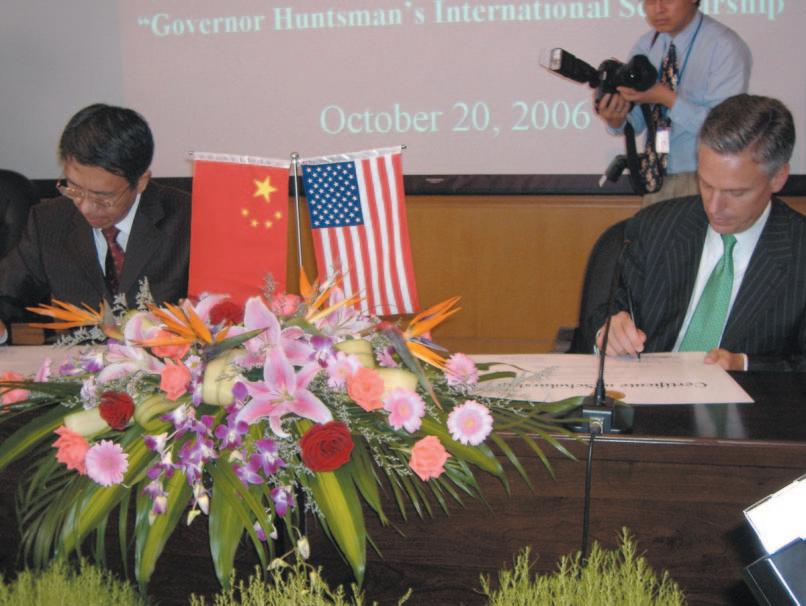
Governor’s Office of Economic Development • Annual Report 2007 32
Governor Jon Huntsman Jr. and Shanghai Normal University Vice President Lu Jianfei sign Governor Huntsman International Scholarship agreement between the University of Utah and Shanghai Normal University, October 26, 2006, in Shanghai, China.
INTERNATIONAL TRADE AND DIPLOMACY
Southeast Asian Nations (ASEAN), which include many of the rapidly growing Southeast Asian economies, such as Vietnam, Malaysia, Singapore, and Thailand. The ASEAN region of 500m inhabitants provides significant growth opportunities for many of Utah’s companies, including those in the natural products sector. The three-day seminar was attended by over 170 Utah firms/organizations, who learned about market dynamics and corresponding opportunities in each region. The companies also engaged in valuable networking events w ith Ambassadors and trade officials. The seminar included an educational forum at the University of Utah that explored business, political and social trends in the region.
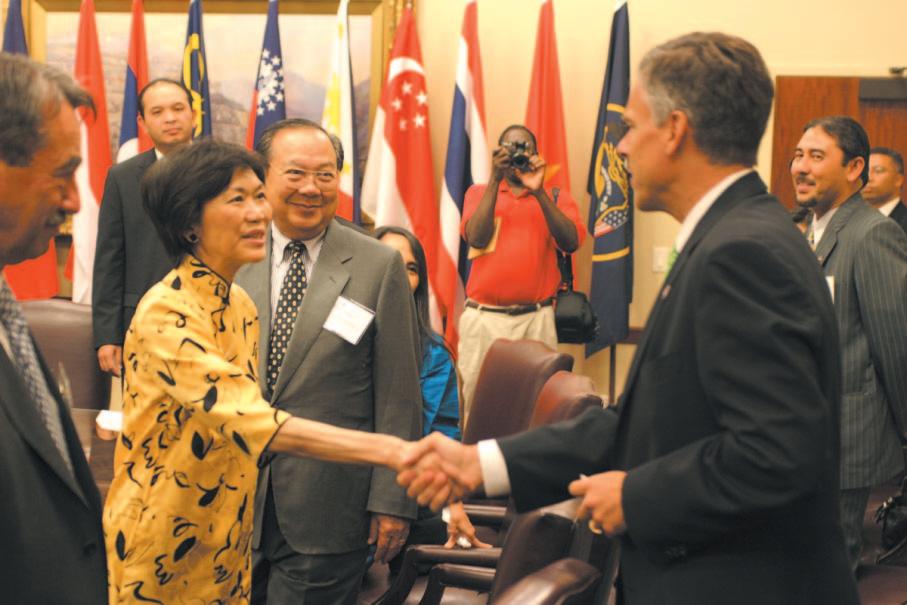
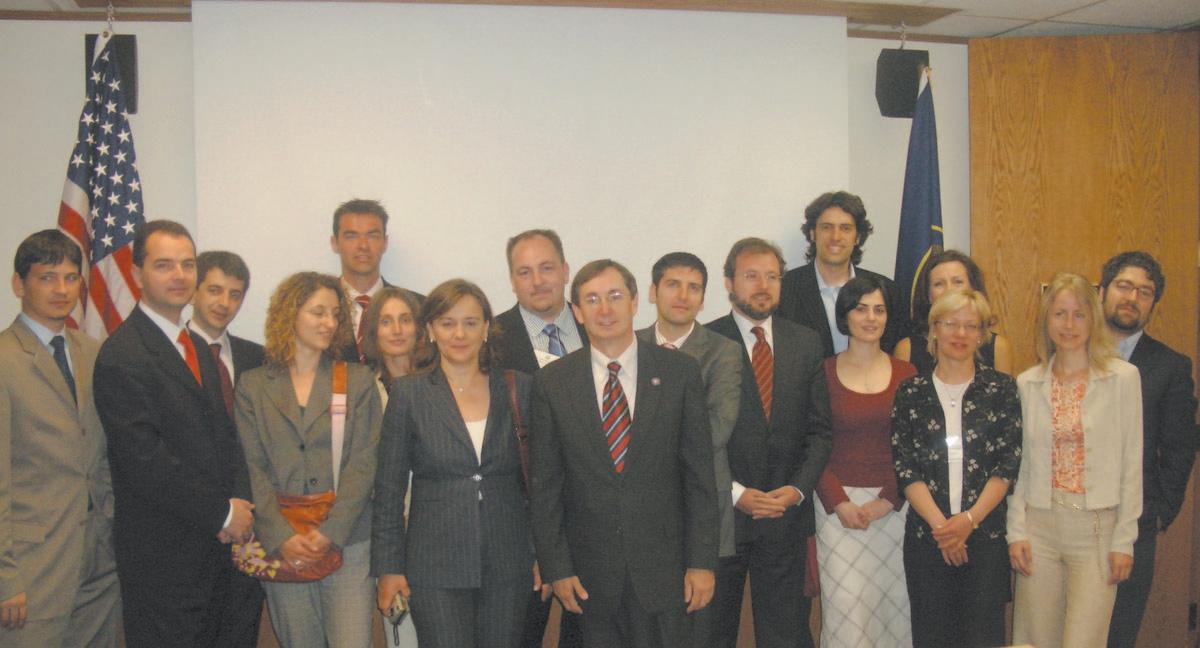
Europe and India
The India Initiative began with a series of focused seminars and preparation for the Utah-India Trade Mission in the fall of 2007. The European Union’s “CE Mark” has been an obstacle to many Utah companies. Several companies were assisted in obtaining the certification. Exports have increased dramatically to the EU due in part by the strength of the Euro.
Latin America and Canada
Three trade missions were successfully executed during Fiscal Year 06-07. Governor Huntsman led the trade mission to Toronto, Canada which created synergies between Utah’s and Canada’s biotech sectors. The two matchmaking trade missions to Mexico involved the cities of Monterrey, Saltillo and Mexico City. Our companies were successful in establishing commercial ties and contracts during those trips.

Governor’s Office of Economic Development • Annual Report 2007 33
European Delegation visits Governor’s Office of Economic Development, International Trade and Diplomacy Office. Franz Kolb Director for Europe provides economic briefing and cooperation discussion.
Governor Huntsman meets with Chilean Ambassador Mariano Fernández in April 2007.
Governor Jon Huntsman greets ASEAN Ambassadors at the beginning of a three-day business and educational conference in Salt Lake City, July 2006.
PRO CUREMENT TECHNICAL ASSISTANCE CENTERS (PTAC)
Helping Utah companies secure military and government contracts.
Helping Utah companies secure military and government contracts. Assisted with more than $100M in contracts and 2,719 jobs for Utah companies in 2006.
Utah Procurement Technical Assistance Centers help small businesses with all phases of Government contracting (federal, state, and local). Counselors provide one-on-one and group instruction that helps clients identify contracting opportunities, which can create growth of market share and revenues, for them. The government is an excellent customer because they generally purchase in large quantities and pay their bills on time.
PTAC is an important part of the Governor’s Office of Economic Development (GOED) with nine offices throughout the state to assist you. There are specific keys available from your PTAC office as follows:
•Bid match software to find bid opportunities
• One-on-one counseling
• Workshops and Conferences
•Reg istration Assistance (Duns, CCR, ORCA)
•Networking facilitation
•Contracting Partnerships
-Prime / Sub
-Mentor / Protégé
-Teaming Agreements
- 8(a) / Hub Zone Opportunities
•Bid Proposals (response to an RFP)
•Product Specifications / Standards
•Procurement Histories / Pricing Data
• GSA Assistance
Success Story / Highlight:

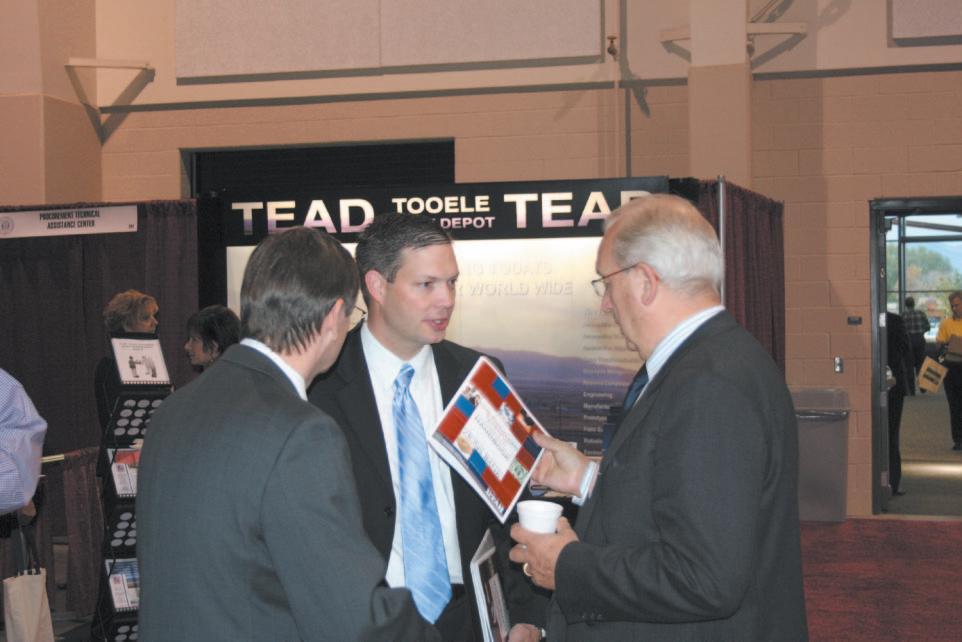
GOED Executive Director
•PTAC recently pared up two prospective businesses - Peterson, Inc. (Ogden) and Pilkington Metal Finishing (Salt Lake City) - followed by a tour of Pilkington’s facilities. The following day Pilkington
Governor’s Office of Economic Development • Annual Report 2007 34
Jason Perry meets with Mr. Frederic De Pryck, European Representative for the State of Utah, GOED at 2006 Procurement Symposium.
2006 Procurement Symposium held at SouthTowne Expo Center saw 400 attendees learn how to sell to the Government and Military.
PRO CUREMENT TECHNICAL ASSISTANCE CENTERS (PTAC)
met at Petersen’s Ogden facility and brought back the first group of parts to process. Pilkington expects a mutually beneficial relationship, thanks to PTAC. Pilkington has invoiced Petersen a total of $5,164.20 in the first eight-week period.
Cumulative $ Amount of Contracts
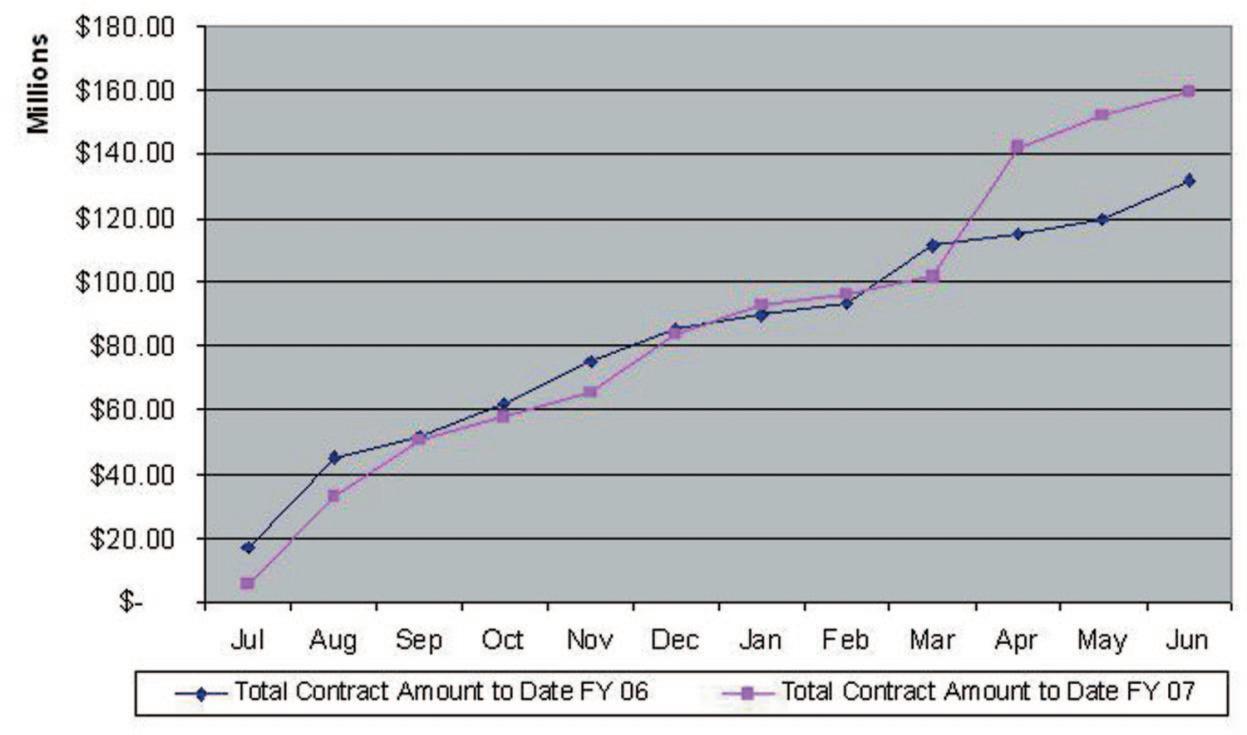
•Fort Duchesne (UT) based Uinta River Technology (URT), LLC, a tribally-owned 8(a) Information technology company involved in the digitization of records and data entry, recently signed a one-year Teaming Agreement with HyperNet Solutions, Inc. (HNSI), headquartered in Del City, Oklahoma. HNSI specializes in infrastructure design and support, custom web portal application and development that compliment URT’s digitizing background. “This agreement will allow the two companies to work together in pursuing government contracts with the Department of Defense and other federal agencies” said Larry Blackhair, Business Development Manager for URT.
Using $400K from the State of Utah and $300K from the Department of Defense, PTAC assisted Utah small businesses with $136,000,000 of new contracts, thereby creating/retaining 2,719 jobs for Utah residents.
Michelle Hoang, President of HNSI, said “we are looking to build a longterm relationship with URT to go after Federal Government contracts in IT integrated system and support to include help desk and call center support, custom application development; security support for Home Land Security; and web portal development.”
Chuck Spence, Deputy Director for the Procurement Technical Assistance Center (PTAC), a program under the Governor’s Office of Economic Development, who helped facilitate the arrangement, said “this is an excellent opportunity for the two companies to combine their core competencies, and increase their labor categories. Both companies have a successful past performance record that will be attractive to government buyers.”
Uinta River Technology currently has contracts with several federal agencies within and outside of Utah.
Governor’s Office of Economic Development • Annual Report 2007 35
RURAL DEVELOPMENT
Expanding opportunity for business and infrastructure into Utah’s rural communities.
The Rural Development Program is an advocate of and provides support to Utah’s rural communities and businesses and is the conduit for rural Utah to other GOED and State resources. Through partners like the Governor’s Rural Partnership Board, with representation from business, industry, government, and from all corners of the state, we educate and raise awareness for rural needs, define economic barriers, and bring these issues to light with the Governor, the Utah Legislature and other state and federal agencies.

The majority of Utah’s communities are small.
GOED partnering with USU Extension has initiated many seminars and workshops, coordinated programs plus a statewide quarterly internet Webcast including GOED and USU Extension programs and the newly created USTAR initiative. The last web cast of 2007 will originate from Kanab. The rural office continues to support the statewide network of local economic development professionals. Outreach services continue to be formed with custom fit training, manufacturing partnerships, the Utah Alliance, cluster development, business recruiting and incentives, Utah Science Technology and Research, Utah Department of Community and Culture and the Governor’s Office of Planning and Budget. Through these networking efforts, the rural development office is leading the organization and implementation of statewide business resource centers.
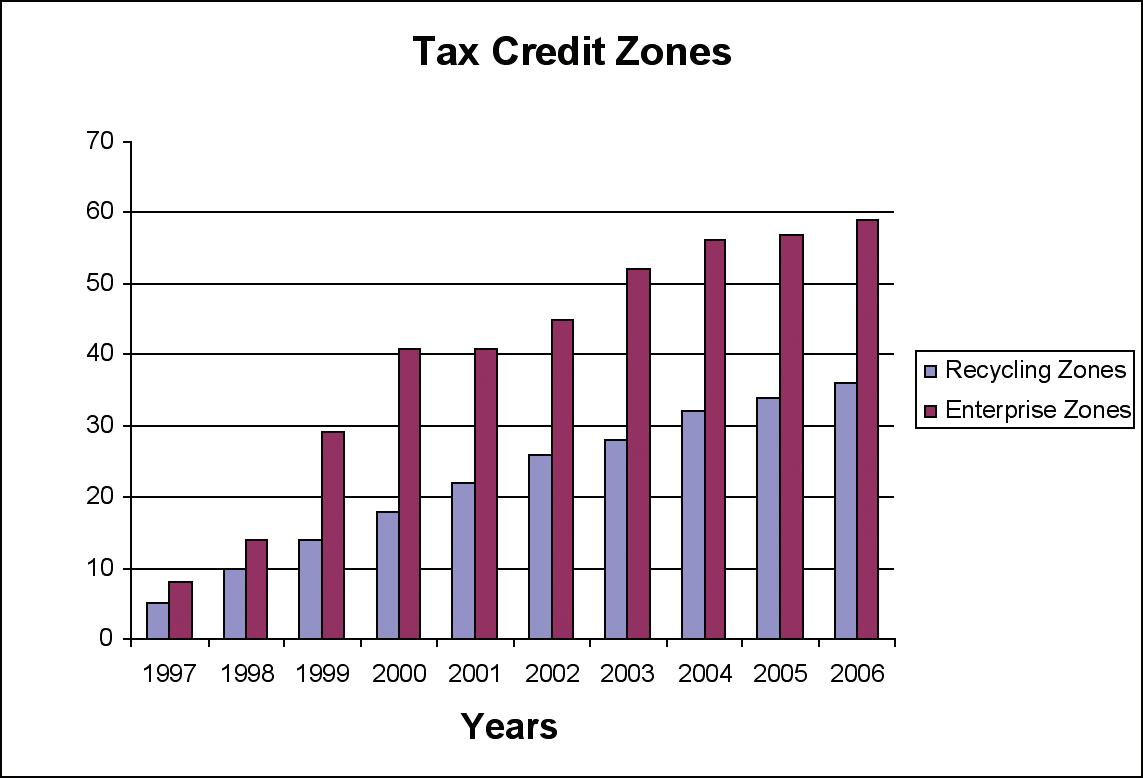
This year the Rural Office is implementing a new economic development tool, Rural Development Grants, to assist communities located in remote and disadvantaged areas facilitate their economic
We partner annually with the Center for Ru r al Life to co-host the annual Rural Summit. This year we celebrated the 20th anniversary of this rural event in Cedar City.
The Rural Development Office also administers two statutory business tax credit programs.
Utah Enterprise Zone Program allows non retail businesses, located in locally defined and state approved geographical zones, tax credits for new investment in plant and equipment and for new full time permanent jobs.
Governor’s Office of Economic Development • Annual Report 2007 36
RURAL DEVELOPMENT
Recycling Market Development Zones allow limited tax credits to individuals and businesses for investing in plant, equipment and creating jobs, in recycling companies and manufacturers that use recycled commodities in their manufacturing processes.
This year the Rural Office is implementing a new economic development tool, Rural Development Grants, to assist communities located in remote and disadvantaged areas facilitate their economic development visions.
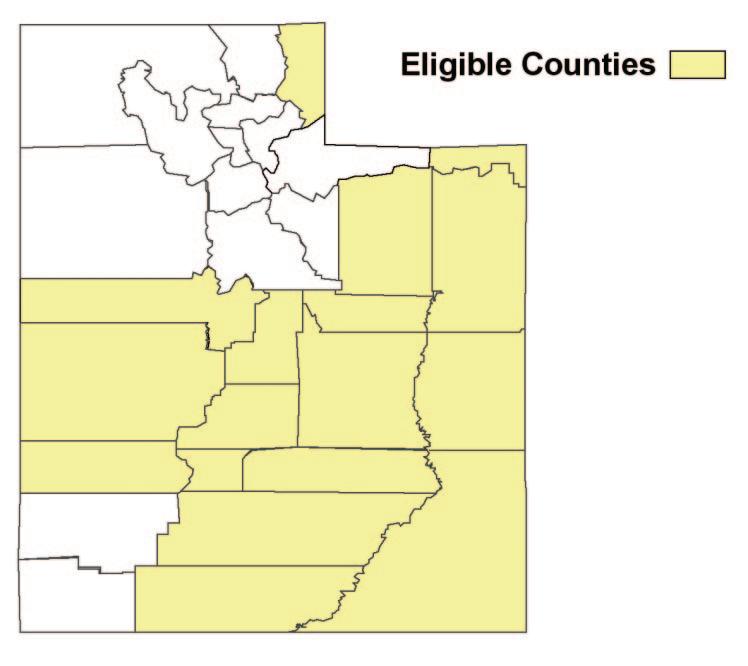
Eligible Utah counties for Rural Development Grants
During the last legislative session, the rural development office was successful in expanding the Industrial Assistance Fund to provide incentives for smaller Utah rural businesses. The grants will be focused on companies that create higher paying jobs and their associated infrastructure needs.
We will continue to advocate rural education initiatives by supporting access to baccalaureate degree program in our smaller communities. This last year the legislature provided 7 million dollars for Utah State University to expand its degree programs in rural Utah. The focus of this effort is to increase the number of business degrees in our smaller counties.
Prov iding and upgrading rural infrastructure has always been a priority for the rural office and a necessity for small communities. This year the legislature provided funds to assist underserved area with wire based high speed internet. We partner with federal and other state agencies to assist with many community infrastructure needs.
Our health care initiative stimulated the appointment of an executive director for the Utah Health Insurance Exchange. Individual and small businesses will have more access to affordable health insurance options through the exchange program.
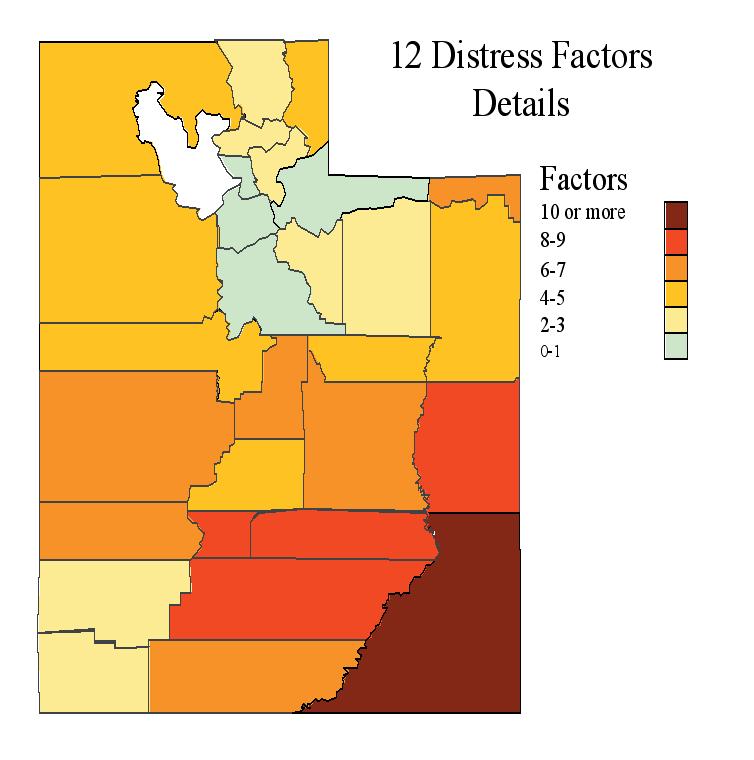
Utah counties by distress factors
The state is experiencing unprecedented economic activity, unemployment has been at an all time low. However, many rural counties still have not been able to share in all the economic growth factors and have economic barriers to overcome. The rural development office works with local governments to assist with economic barrier identification and distress factor mitigation strategies.
Governor’s Office of Economic Development • Annual Report 2007 37
STATE SCIENCE ADVISOR
De veloping government, education and private sector partnerships.
The State Science Advisor (SSA), appointed by the Governor, provides advice and counsel on science and technology issues to the Governor, state legislature and other state agencies. The Science Advisor serves on a broad range of boards and commissions pursuant to the oversight of key scientific initiatives, research efforts, federal and state mandates and on-going programs devoted to science and technology issues. The Science Advisor has specific responsibility to supervise or participate in the following key areas:
Adv isory Council on Science and Technology (SAC)
The SSA and SAC review significant advances in science and technology and advise and make recommendations to the Governor, state legislature and governmental agencies on the use of science and technology to foster scientific literacy and to strengthen the state’s economy, educational system and quality of life. The SSA serves as an ex-officio member of the SAC and provides staff support for all SAC activities and initiatives.
Governor’s Medal for Science and Technology
The State of Utah has chosen the Governor’s Medal as a symbol of recognition for those individuals who have provided distinguished service in the fields of science and technology. The Governor’s Medal recognizes outstanding achievement in the following areas: academia, industry, government and education. A special category recognizes individuals that may not meet all of the specific criteria but whose accomplishments merit recognition for this award.
Utah Applied Science, Technology and Engineering Camps (ASTEC)
The SSA supports a state-wide science camp initiative that provides opportunities for students to become involved in hands-on science, technology and engineering activities. The ASTEC program supported 16 camps during the summer of 2007, as well as the Salt Lake Valley Science Fair (SLVSF) and the Science Olympiad. Participants are represented from the en ti re state of Utah and ranged from the Oly mpiad and SLVSF to engineering-related activities such as building telescopes and robots. The Science Olympiad was one of the two camps that focused on bringing innovative, hands-on science education training to public education science teachers. The intended outcome of the camp was to help science educators (15 participants in total) implement their ow n Science Olympiad competitions for their students. Dr. Sharon Ohlhorst, the director of the training camp intends upon following up with the teachers to determine if the camp will result in the implementation of Science Olympiad’s at the respective schools and what further support will be required for the teachers. Financial support for ASTEC was a result of both legislative funding ($100,000 in 2006; $150,000 in 2007), as well as private donations ($75,000 in 2007) and awards were given as a result of a competitive application process.
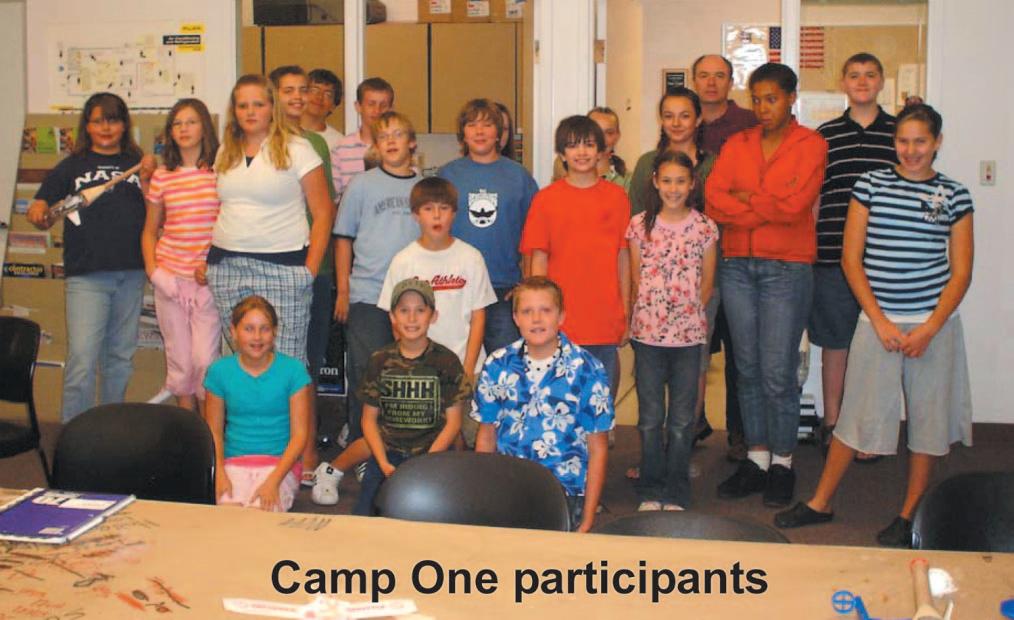
Governor’s Office of Economic Development • Annual Report 2007 38
Caption
STATE SCIENCE ADVISOR

The summer camps and their related activities encourage students to continue to explore educational opportunities in the sciences. Alex, a student from the Salt Lake Community College “Slick Science” camp confirms this to be the case..... “I built four robots [in Slick Science], have been checking out a lot of books at the library and Radio Shack is my favorite store now!” Perhaps an engineer in the making!
Workforce Innovations in Regional Economic Development (WIRED)
The Governor’s Office of Economic Development (GOED) recently received a US Department of Labor grant for $5.1 MM through the Workforce Innovations in Regional Economic Development (WIRED) program. This 3-year grant focuses on supporting the Utah life science industry by building strong partnerships through government agencies, higher and public education institutions, life science industries and community and philanthropic entities. The anticipated outcomes are to promote regional economic transformation through strengthening collaborative partnerships, mapping and leveraging resources and supporting the growth of workforce talent for the life science industry. The WIRED initiative, called the Utah Life Science Employment and Development (ULEAD) initiative, was officially “kicked off” on May 10, 2007 by Assistant Secretary of the US Department of Labor Emily Stover DeRocco.

Governor’s Office of Economic Development • Annual Report 2007 39
Seth Ferrin with his ”black rocket.”
Zach Fowler with the rocket launcher.
UTAH OFFICE OF TOURISM
Advertising and marketing the state to visitors around the world.
The Utah Office of Tourism brands and promotes Utah’s great experiences for visitors and citizens in a way that enhances our quality of life. More visitors are coming to Utah than ever before, since the Governor’s Office of Economic Development’s Utah Office of Tourism launched its new “Life Elevated” brand in April of 2006. Last year, more than 19 million visitors were attracted to Utah’s five national parks, more than 40 state parks, recreation areas, historical sites, and other major attractions. Governor Huntsman’s administration is committed to enhancing Utah’s national and international image and promoting the state as a year-round destination. Utah lawmakers have appropriated $11 million dollars for the next fiscal year for out-of-state advertising; the same level of funding the tourism office has received for the past couple of years to brand Utah. The 2006 Summer Marketing campaign included television, print, and online advertising in Denver, Las Vegas, and Los Angeles. The 2006/07 Winter campaign focused on the Los Angeles and New York markets, and a national cable buy generated a record number of phone calls to the agency’s live Call Center and e-mail inquiries.
Highlights:
•Utah Office of Tourism advertising has been highly successful this past fiscal year, generating a record number of requests for travel guides. More than 200,000 award-winning Utah Travel Guides were printed and distributed. An additional 40,000 travel guides are being reprinted to handle the requests for Utah tourism information while the 2008 guide is being created. In addition, the current travel guide was named the best travel guide in the country by the National Council of State Tourism Directors (NCSTD).
•Visits to www.utah.com went from 305,286 in the spring of 2006 to 372,026 this year, up nearly 22%. For the same time period, requests for travel guides from www.utah.com are up more than 450%. For March, April, and May, incoming toll free calls jumped from 8,421 in 2006 to 19, 058 in 2007, an increase of 126.3%.
Web visits to www.utah.travel for the spring/summer ad campaign jumped from 110 in 2006 to 19,319 this year, an astounding increase of 17,462.7%.

•A Madden Preprint Insert last spring resulted in 80,000 brochure requests, one of the largest generators of leads in Madden history. More than 1 million newspaper insertions ran in newspapers in California, Colorado, and Nevada on Sunday, April 29, 2007.
•In the last fiscal year, the Board of Tourism Development funded 51 Cooperative Marketing applications for $1.96 million from non-profit tourism entities in 22 Utah counties. Forty-three applications were recently approved for nearly $2.25 million in marketing the Utah “Life Elevated” brand in FY 2007/08.
•The Utah Office of Tourism promoted the state at trade shows in Canada, China, Germany, Japan, and the United Kingdom. Marketing efforts were also conducted in Mexico and The Benelux, and
Governor’s Office of Economic Development • Annual Report 2007 40
2007 Utah Summer Print Campaign ad
UTAH OFFICE OF TOURISM
at the New York Times Travel Show, the Adventure Travel World Summit in Seattle, Continental Airlines’ Asian Pacific Conference in Houston, and the Sunset consumer show in Menlo Park, California. A German Utah travel planner was pr inted.
• Staff hosted more than 55 familiarization tours for tour operators and media from the United States, Europe, South America, and Asia.
•The 2007 Utah “Life Elevated” Scenic Calendar was honored with eight awards in the National and World Calendar Awards competition, hosted by the Calendar Marketing Association. The annual calendar is used to market the state.

Lake
•A new Utah “Life Elevated” poster series was unveiled. Fifteen scenic prints highlighting national parks and other top destinations are being distributed to state agencies and the public. The posters were designed in-house.
• Staff collaborated with the Utah Department of Transportation to print a new Utah Highway Map.
•The Utah Office of Tourism provided a $350,000 sponsorship for the Warren Miller “Off the Grid” ski film that included state branding on promotional materials for 400 screenings in 180 cities in 35 states. Warren Miller footage was provided for Utah’s winter spots and for Delta Air Lines’ in flight viewing.
•Twenty-four CR England trucks wrapped with ski and red rock images of Utah traveled freeways throughout the West promoting the “Life Elevated” brand.
•The Utah Office of Tourism encouraged Utah residents and out-of-state visitors in surrounding states to vacation in Utah this summer. The “Visit Utah First, Just a Tank Away” campaign was launched on KSL Newsradio 102.7 FM and 1160 AM.
•Hundreds of tour operators traveled to Utah in November for the 2006 National Tour Association Annual Convention. The Utah Office of Tourism was a major sponsor of the event, which attracted 2,200 attendees, including 54 delegates from Utah.
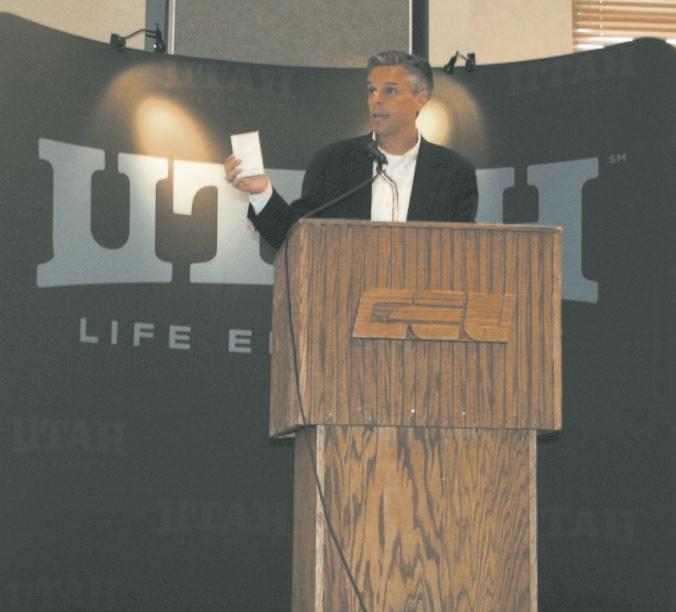
• Eleven projects along Utah’s state and nationally designated scenic byways received funding approval for nearly $787,000 in the 2006 National Scenic Byways Program funding cycle.
•More than 240 people attended the Utah Tourism Conference held during May at the College of Eastern Utah in Price.
Governor’s Office of Economic Development • Annual Report 2007 41
Powell featured in the Utah Office of Tourism’s new poster series.
Governor Huntsman discusses his Economic Plan during the Utah Tourism Conference in Price.
UTAH OFFICE OF TOURISM
63-38f-1409 FY2006-07 Strategic Marketing & Research, Inc Study (SMARI)
•The Utah Office of Tourism’s Summer 2006 advertising campaign helped to generate $168 million in traveler spending and $13.3 million in state and local tax revenue, generating a return on investment (ROI) on state and local tax revenue of $5.47 for every $1 spent on the ad campaign. That was with a late start in the year due to the spring brand launch. The summer ad campaign didn’t begin until July.
•The Utah Office of Tourism’s Winter 2006-07 advertising campaign helped to generate $511 million in traveler spending and $40.6 million in state and local tax revenue. The return on investment (ROI) on state and local tax revenue was $14.66 for every $1 spent on the ad campaign, according the analysis provided by Strateg ic Marketing & Research, Inc., based in Indiana.
Tourism by the Numbers:
•County Transient Room Tax Revenue for FY 2006-07 was $28,007,488, an increase of 24.3% compared to FY 2005-06.
• 5.2 million recreation visits were made to Utah’s five national parks during 2006.
•Another 4.7 million recreation visits occurred at Utah’s seven national monuments, two national recreation areas, and one national histor ic site.
• 4.5 million visitors enjoyed Utah’s 42 state parks during 2006.
• 23.0 million vehicles crossed Utah’s borders along Interstate highways in 2006.
• 21.6 million passengers arrived at Salt Lake International Airport during the year.
•Utah’s ski and snowboard industry notched its fourth consecutive record-breaking season

Greatest Snow on Earth®
w ith its 13 ski resorts hosting nearly 4.1 million skier days during the 2006/07 season.
• 581,154 visitors stopped at one of Utah’s six Welcome Centers during 2006.
Governor’s Office of Economic Development • Annual Report 2007 42
UTAH RECRUITMENT INITIATIVE
Assisting Utah employers maintain a competitive edge by attracting essential talent.
With the state of Utah at basically full-employment a major talent recruiting initiative by the Governor’s Office of Economic Development in conjunction with the private sector and other state agencies, has been developed in order to head off the potential of a labor shortage that could widely impact Utah’s employers.
Beginning in October 2006 and at the personal request of Governor Jon Huntsman GOED has formed an action group made up of representatives of the Department as well as EDCUtah, Salt Lake Chamber of Commerce, recruitment companies, Utah Workforce Services, and the Utah Department of Commerce, along with members of private industry, tasked with the development and implementation specifically of a statewide, regional, and national recruitment effort to Utah beginning first in all fields of engineering and other professionals.


Ad placed in 10 major city markets reaching 1.5 million readers encouraging those looking for professional positions and who may be interested in moving to Utah to work.
At the present time some of Utah’s largest employers such as ATK, Williams International, IM Flash, Micron, and L-3 Communications among others, including the Utah Technology Council, have identified a need for immediate placement of approximately 1,000 trained engineers.
The effort by the GOED recruitment task force will be to address and find ways of filling this industry need as well as being able to then replicate those recruitment actions in other fields, such as pharmacists, nurses, etc.
This effort has and will include actions such as a national media campaign, both paid and earned, as well as attendance by the state of Utah in partnership with private industry to recruitment tradeshows around the nation.
Jobs flyer distributed at targeted trade shows where professionals with engineering skills etc. may be interested in moving to Utah to work.
Governor’s Office of Economic Development • Annual Report 2007 43
“Here for the Holidays”
IM Flash Technologies Honored with Economic Deal of the Year Award
State begins a campaign to help companies hire engineers
Company and State are honored for collaboration bringing major economic development to the State.
The Governor’s Office of Economic Development (GOED) and Business Facilities Magazine presented Rod Morgan and Dave Baglee, CEOs for IM Flash Technologies, LLC, w ith the nationally recognized “High Honor’s” Award for the Economic Development Deal of the Year Award (EDDY).
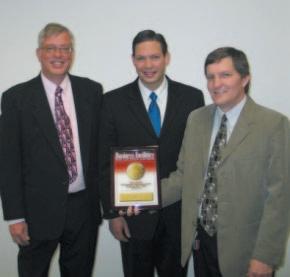
Working with the Governor’s Office of Economic Development IM Flash Technologies was recognized as one of the countries outstanding eco-
nomic development collaborations between state agencies and private sector companies. The EDDY Award now in its 14th year recognizes the positive impact the project will have upon the local community, the unique challenges the project presented and the or iginality, methods and effort used by the economic development organizations involved to secure the company’s operations in to the state.
With Utah’s hot economy and historically low unemployment, many Utah companies have placed engineering talent at the top of their holiday wish list this year. The State of Utah, in partnership with key organizations, has implemented a plan to help communicate with visiting engineering talent during the holi-
day season.
Utah Awarded “Silver Shovel” for Industrial Development
Award
Department of Labor Awards State $5 Million Grant
U.S. Secretary of Labor Elaine L. Chao today announced a $5 million gr ant to the State of Utah. The Governor’s Office of Economic Development (GOED) along with the Department of Workforce Services (DWS) and several other partners have been working with DOL for a year on the program.
To help facilitate dialogue, identify opportunities, or search for jobs, the Governor’s Office of Economic Development (GOED) has set up a hot line with an easy email address for resume submission. The goal is to put Utah jobs at the top of every engineer’s list.
Honors Utah for 2006 Statewide Activity
Salt Lake City -The Governor’s Office of Economic Development announced today that Area Development magazine, a leading publication focused on corporate site selection in the United States, has recognized Utah with a “Silver Shovel” award for its industrial and corporate development activity in 2006. Utah competed against ten other states with a population of less than 3 million. Larger states co mpeted in other population categories.
Under the Workforce Innovation in Regional Economic Development Initiative (WIRED) program the State was awarded the $5 million dollars to further develop a program designed to create a pipeline of highly-skilled talent for Utah’s bio-technology and bio-manufacturing industry.
The award is based on direct job creation, new jobs per capita, amount of new investment, number of new facilities, and number of projects creating high value-added
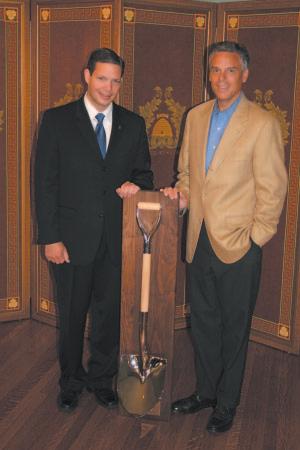
jobs, Utah was selected to receive the Silver Shovel award because of the overall quality of high quality jobs being created by the companies expanding in Utah and the significant investment being made in the projects now underway throughout the state.
Two Major Reports Rank Utah Among Top Places to do Business
Governor’s Office of Economic Development Approves Incentive in Nephi
FiberTEK Insulation, LLC to build $32millon Plant
Salt Lake City - The Governor’s Office of Economic Development (GOED) Board met today in a special board meeting and approved a $4 million combined IAF and EDTIF incentive. The incentive will be used in conjunction with other local incentives to encourage and assist FiberTEK in the construction of a new insulation plant that will add 99 New Full time jobs in Juab County.
Jerr y Oldroyd, Chairman of the
Incentive subcommittee pointed out that “the legislature has given us a mandate to assist rural Utah whenever possible. It is important that we continue to provide incentives to rural communities and FiberTEK is an excellent fit for Nephi.” “ We heard Nephi Mayo r Mark Jones just express how important a quality company like this will be in their rur al community,” continued Oldroyd.
Forbes Magazine Ranks Utah #2 and CNBC Ranks Utah #3
Salt Lake City - Utah received back to back accolades from two of the top business media organizations today. Forbes Magazine’s Ranking of Utah as the No. 2 Best State for Business, up from No. 4 last year. At the same time Utah has been rated the No. 3 Best State by CNBC. Each report recognized Utah’s high quality of life and superior workforce available to business.
Governor Jon Huntsman touted the newest rankings as a continuing trend, “The recognition of our business-friendly climate is evidence of
a State on the move. In the long term, a strong economy is the best way to ensure a solid foundation for our future.”
According to the Governor’s Office of Economic Development, fiscal year 2006 and yearto-date 2007 data shows 28 companies were recruited to the State result ing in $3 billion in new wages being paid in the next ten years to 8,000 new Utah workers. New business capital investment will exceed $2 billion during the same period.
Governor’s Office of Economic Development • Annual Report 2007 44 UTAH IN THE NEWS
GOVERNOR’S OFFICE OF ECONOMIC DEVELOPMENT PARTNERS
Governor’s Office of Economic Development • Annual Report 2007 45
ECONOMIC DEVELOPMENT CORPORATION OF UTAH
Economic Development Corporation of Utah (EDCUtah) is an investor-based public/private partnership working with government and private industry to promote the state of Utah.
EDCUtah’s mission is to serve as a catalyst for quality job growth and increased capital investment by assisting in-state companies to grow and recruiting out-of-state companies to expand and relocate in Utah. EDCUtah accomplishes its mission by being the comprehensive source for economic data, key public and private contacts, and help through the expansion or relocation process.
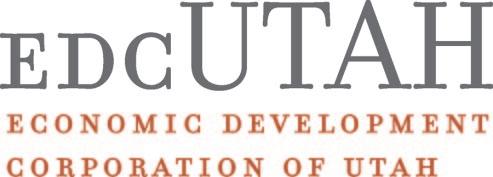
In 2005, the Governor’s Office of Economic Development (GOED) contracted with EDCUtah to handle much of the state’s business recruitment efforts. Today, a strong partnership has been created with significant coordination and success in recruiting businesses to Utah. This partnership now links state government with local government and the private sector in a unified approach to business recruitment.
AMER SPORT: A BUSINESS RECRUITMENT SUCCESS STORY
Amer Sport’s relocation to Utah is a good example of the partnership between EDCUtah, GOED, local government, and the private sector. Amer Sport, makers of Salomon, Atomic and Suunto brand sporting g oods, recently announced the relocation of its North Amer ican headquarters to Ogden, Utah.
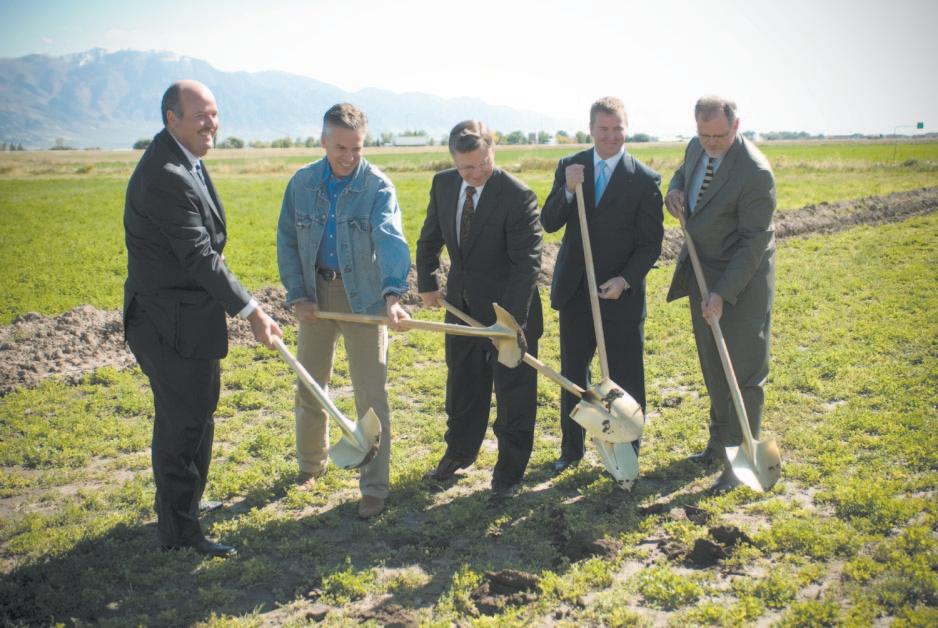
Through their experience in Utah at the twice-yearly Outdoor Re tailer Tradeshow held in Salt Lake City, Amer Sport executives included Utah as a potential destination for their new headquarters. EDCUtah provided economic data and coordinated site visits with local and state government officials, private-sector business leaders, and real estate professionals. The choices were soon narrowed to Utah and Oregon. EDCUtah and GOED worked closely throughout the process and assisted Amer Sport in obtaining state incentive funds, and local communities offered innovative locations and programs to the company. In the end, Ogden was selected as the new home of Amer Sport North America, due in large part to Utah’s positive business environment and “mountain culture.”
RESULTS
EDCUtah’s involvement in expansion and relocation projects generally includes many elements including gathering and consolidating critical economic data, preparing sophisticated economic analyses, organizing and hosting meetings and site visits, connecting clients with key government and private sector individuals and departments, facilitating discussion and negotiations, and helping clients through the entire relocation/expansion process.
Governor’s Office of Economic Development • Annual Report 2007 46
Governor Huntsman turning dirt with EDCUtah CEO, Jeff Edwards and West Liberty Foods executives at a ground breaking in Tremonton, Utah.
ECONOMIC DEVELOPMENT CORPORATION OF UTAH
During the 2006-2007 fiscal year, EDCUtah assisted the following companies that subsequently announced their intentions to expand or relocate in Utah.
Allegheney Technologies, Inc.
West Liberty Foods, L.L.C.
Millard Refrigerated Services
Heritage Plastics
Dannon
Hunter Douglas
Ortner c.l.s. USA, Inc.
Molecular Biologics
Nucor Building Systems
Young Living Essential Oils
Weatherford
US Holdings, Inc.
Amer Sport
SRATS
Clear Link Technologies
Warehouse 86
Fresenius Medical Care
Charlotte Pipe and Foundry
Mule Deer Foundation
Smith Sport Optics
Peregr ine Outfitters
Backcountry.com
Q Analysts
Silver Stone Wheel
Bonnie Plant Farm
Acusport Corporation
Sy racuse Castings West Corp.
American Textiles
Kenney Manufacturing Co.
Fluor Enterprises, Inc.
Haliburton
Base Camp Communications
McKenzie Sport Products, Inc.
E*trade
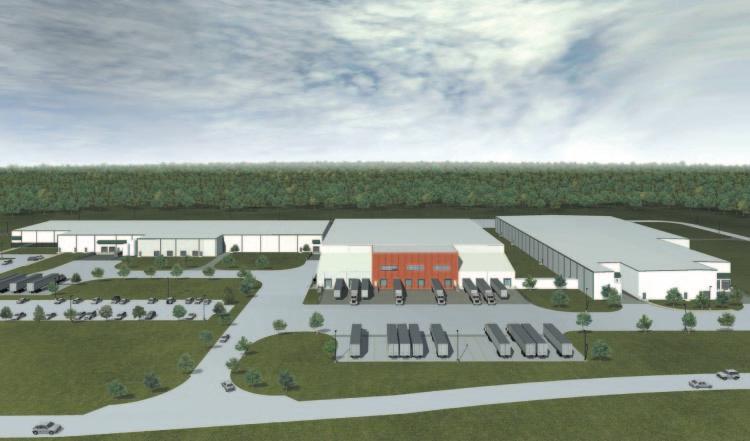
Renderings of the new West Liberty Foods facility in Tremonton, Utah
The following metrics are a result of the EDCUtah/GOED partnership efforts during the 2006-07 fiscal year:
• 34 companies relocated, expanded, retained.
• 5,570 new jobs committed.
• 840 jobs retained (from companies that had been considering leaving the state).
• 2,609,000 square feet of real estate absorbed.
• $884.9 million of new capital investment in Utah.
Governor’s Office of Economic Development • Annual Report 2007 47
UTAH FUND OF FUNDS
The Utah Fund of Funds (Utah FoF; Http://www.UtahFoF.com) was created by the Utah Legislature to maximize the amount, quality and diversity of capital funding available to early-stage and growth-stage companies in the state to help them grow, prosper and mature in Utah. Rather than investing directly in specific companies, the Fund of Funds program is structured to incent high-quality professional venture capital firms within and outside the state to focus more of their investment efforts on Utah entrepreneurs. The Utah FoF invests in these carefully chosen venture firms, which then commit to work closely with Utah companies and entrepreneurs - with the ultimate goal of funding promising ventures.
Financing
“Capital is the life-blood of the biomedical industry. The Utah Fund of Funds will do more to attract capital to innovative life science companies in the state than any other single industry or government effort.”

The Utah Utah FoF financing is provided by a third party, and is backed by refundable, transferable, contingent State of Utah tax credits approved by the Utah Legislature. The first $100 million round of the Utah Utah FoF was financed by Deutsche Bank. The program is structured to be financially self-sustaining, with profits from Utah FoF investments paying back financers. Only in the case of a shortfall, which is not anticipated, would the state be required to place tax credit funds into the Utah FoF. No appropriated dollars from the State of Utah are used to finance this program. Proposals from more than 30 financial institutions were evaluated with Deutsche Bank being selected to provide the initial financing.
David Clark President & CEO, Prolexys Pharmaceuticals
Structure
The Utah FoF is governed by two boards that oversee and report on the fund’s activities, which are primarily executed by the program’s staff, led by the Utah FoF managing director, with support from a professional investment advisor firm.
The Utah Fund of Funds Portfolio
As of August 2007, Utah FoF portfolio consists of 15 investment firms, ranging from seed stage to laterstage growth companies, and across a variety of industry areas, from life sciences and information technology to retail, consumer and business services. The Utah FoF is developing a diversified portfolio regarding investment stage, industry specialty, geographic focus (in addition to Utah) and vintage year, resulting from 20 or more fund investments by early 2008. http://utahfundoffunds.com/portfolio.html
Early Success of Utah Fund of Funds
Oregon2$100M52892.50
Ohio2$150M8N/A4.00
Utah
Governor’s Office of Economic Development • Annual Report 2007 48
State Program YearsProgram Size Number of Local Companies Funded by Portfolio Funds Number of State Jobs Created Average Number of Deals per Year
Oklahoma12$99M1910931.58 NewMexico14$500M3819282.71 TriStateI(KY,OH,IN)6$40M32N/A5.33 Iowa2$200M1N/A0.50
Fund I (Current) 1.5
$100 M2397415.33
UTAH SCIENCE TECHNOLOGY AND RESEARCH INITIATIVE
Building on Utah’s heritage of innovation, the Utah State Legislature with strong endorsement of Utah’s business community, passed Senate Bill 75 in March 2006, organizing the Utah Science Technology and Research (USTAR) initiative. This bill funded USTAR with $300 million to invest in university research with high commercialization potential in targeted innovation focus areas including biofuels, biomedical devices, fossil energy, medical imaging, nanotechnology, and personalized medicine. The expansion of these University technologies into the marketplace will accelerate the growth of new businesses and industries, thus creating high-paying jobs and additional tax revenues. Ultimately, USTAR stands as an innovative, visionary and far-reaching initiative to bolster Utah’s high technology economy by increasing the research capacity at Utah’s research universities resulting in accelerated flow and commercialization of university discoveries, inventions, and innovations.
USTAR Innovation Focus Areas and Year 1 results
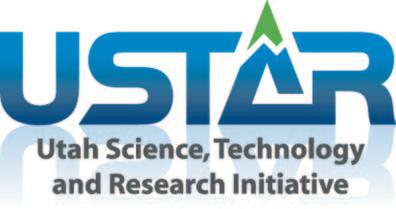
USTAR funding is being used to recruit world-class research teams to Utah to be developed internally w ithin strategic innovation focus areas. These strategic innovation focus areas are based on existing University strengths that have vast commercialization opportunities and address large and/or strategic global markets.
• USTAR Summary - Innovation Focus Areas:
– Center for Advanced Nutrition
– Center for Active Sensing and Imaging (CASI)
– BioFuels
– Imaging Technology
– Diagnostic Imaging
– Personalized Medicine
– Nano-technology Bio-sensors
– Circuits of the Brain
– IT Networking & Memory
– Biomedical Device Innovation
– Fossil Energy
• USU Year 1 Faculty Hires:
– Michael Lefevre, Ph.D., Advanced Nutrition/Obesity
– Sridhar Viamajala, Ph.D., Biofuels
– David York, Ph.D., Center for Advanced Nutrition
– David Ward, Ph.D., Center for Advanced Nutrition
•U of U Year 1 Faculty Hires:
– Cameron Charles, Ph.D., IT Networking & Memory
– Guido Gerig, Ph.D., Diagnostic Imaging
– Hamid Ghandehar, Ph.D., Biomedical Device Innovation
– Brian McPherson, Ph.D., Fossil Energy
– Marc Porter, Ph.D., Nano-technology Bio-sensors
– John White, Ph.D., Biomedical Device Innovation
– 8 candidates are discussing offers
– 12 additional candidates have completed 1st or 2d interviews
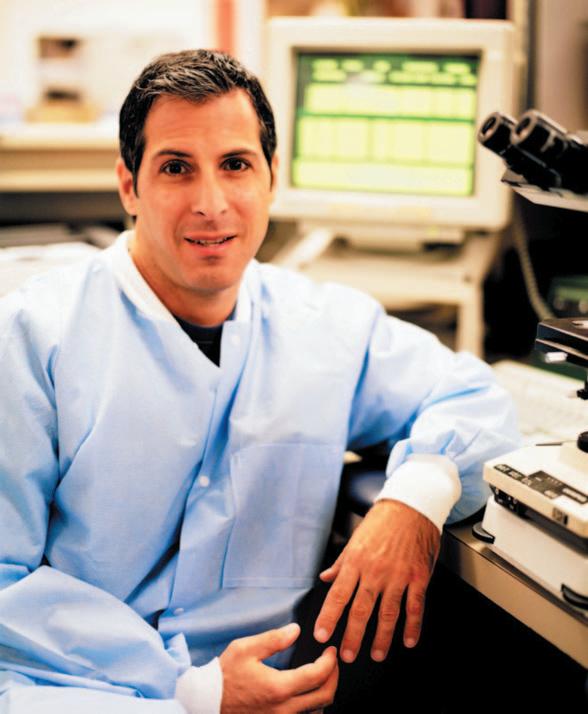
USTAR is aimed at leveraging the proven successes of Utah’s research universities to create more highpaying jobs in Utah.
Governor’s Office of Economic Development • Annual Report 2007 49
UTAH SCIENCE TECHNOLOGY AND RESEARCH INITIATIVE
USTAR Building Construction year 1 progress report
USTAR funding will also help support construction of a state-of-the-art research facility at the University of Utah and Utah State University. Each structure will provide teams with the necessary infrastructure needed to advance innovation and commercialization in their respective focus areas.
•Facility Construction summary: The Programming team has completed 80% of the program process at U of U and USU with expected process completion in Fall 2007
USTAR Technology Outreach and Innovation Program
USTAR created the Technology Outreach Innovation Program (TOIP) to be the engine to drive commercialization activities. The TOIP’s mission is to support the accomplishment of USTAR’s financial, employment, and research objectives by lending experienced leadership, deep business understanding, and functional expertise to the most promising opportunities and focus areas. The program is led by five directors deployed across Utah with a regional focus. Each director heads an Outreach Center located at one of the State’s regional higher education institutions.
Partners
USTAR partners with a host of organizations including the Governor’s Office of Economic Development (GOED) and regional economic development organizations to accomplish its mission. Partnering w ith such organizations allows USTAR to maximize its potential, thereby benefiting Utah’s economy as it becomes one of the strongest in the country.
Economic Impact
•NewearningsassociatedwithUSTAR
•NewjobsassociatedwithUSTAR
•TaxrevenuesassociatedwithUSTAR
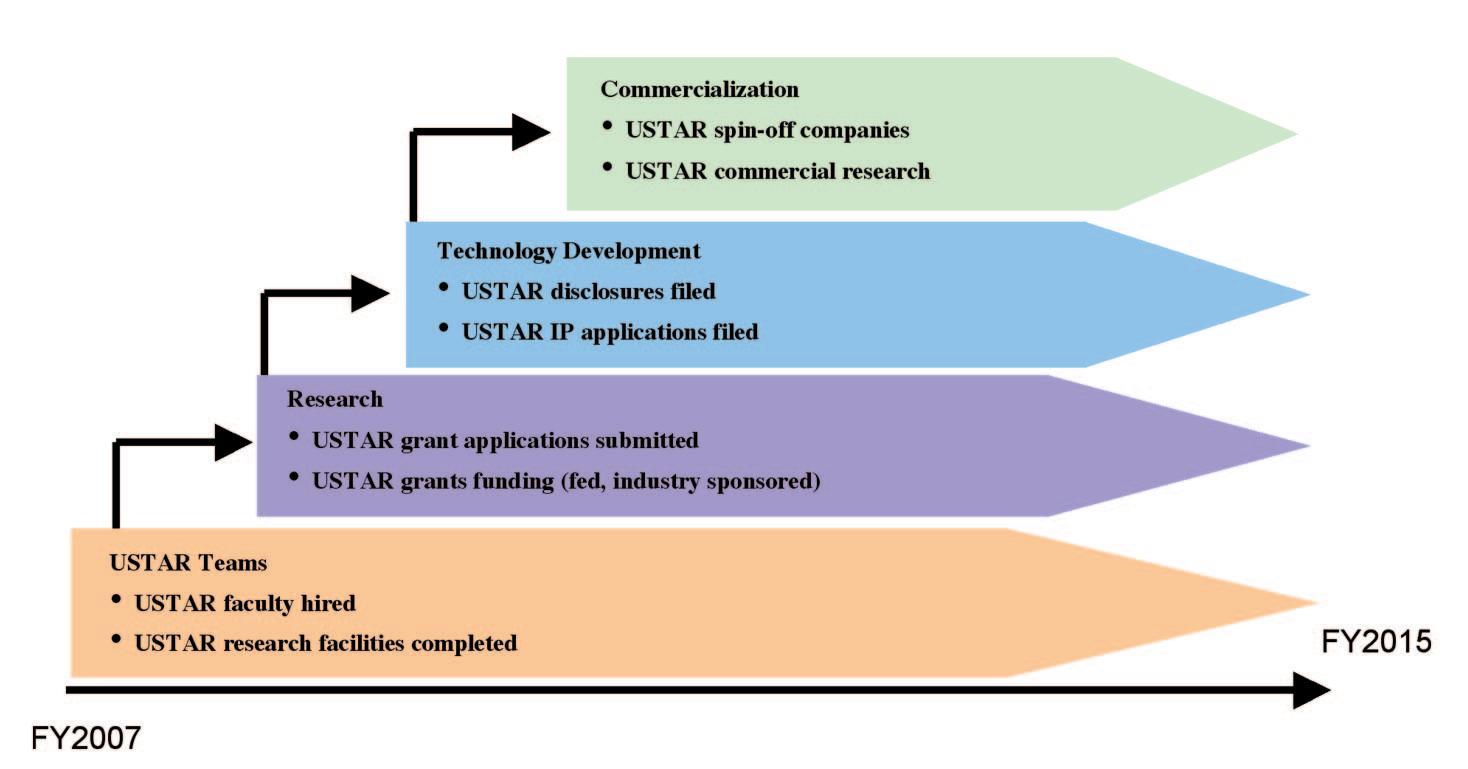
Governor’s Office of Economic Development • Annual Report 2007 50
UTAH SPORTS COMMISSION
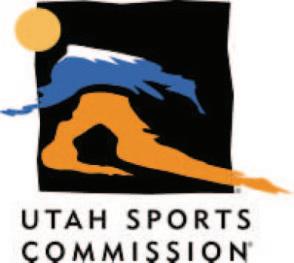
The Utah Sports Commission and its Utah partners had a successful 2006-2007 fiscal year. The Sports Commission continues to distinguish the state of Utah as a leader in the world of sports marketing, event attraction, sport development and sport-related tourism by becoming an invaluable tool to enhance the state’s image. Team Utah hosted 46 events in 16 cities totaling an estimated economic impact of $120 Million with a return on investment of $61 per $1 spent, along with 25 hours of national and international media exposure, and a value estimated at $8-10 Million.
Team Utah Highlighted Events during the 2006-2007 year:
•Triple Crown Girls Fast-pitch Softball World Series
•Utah Grand Prix - American Le Mans Series
•Women’s Premier Soccer League Final Four
•Nissan Xterra Mountain Championship
•Utah EnergySolutions Championship – PGA TOUR
•U.S. Speedskating NGB Relocation
•Huntsman World Senior Games
•Bobsled & Skeleton World Cups
•National Lacrosse League Exhibition Game

•Freestyle Olympic World Cup
• 16th Deaflympic Winter Games
• ISU Single Distances Speedskating Olympic World Championships
•Red Bull International Air Race
•West Coast Volleyball Championships
•Utah Grand Prix – American Le Mans Series
• USA Boxing West Regional Olympic Tr ials
•Honda Summit of Speed, AMA Superbike, AMA Supermoto
•Utah Kyung-Ki Do Invitational Championships

Governor’s Office of Economic Development • Annual Report 2007 51
Red Bull International Air Race, Monument Valley, UT. Jeep King of the Mountain, Mountain Biking Championship, Park City, UT.
UTAH SPORTS COMMISSION
Utah’sSports&RecreationIndustrySizeApproximately$4.5-6Billion**
EconomicImpactfromHostingEvents2001-2011***Approximately$586Million*
ReturnonInvestment(ROI)fromEventsHosted
vsStateDollarsReceived$86:$1
-TotalStateMoneyReceivedfrom1999-2007$6.768M
-TotalImpactfromEventsHostedand/orCommitted$580M
Non-StateFundsandValue-in-KindServices
RaisedthroughUtahSportsCommissionApproximately$5.7Million
NumberofEventsWeHaveLandedorPartnered with“TEAMUTAH”2001-2007231
CitiesImpactedthroughoutUtah18
EventswhichHaveReceivedFunding/Grants125
TotalNumberofEventInquiries2000–January2007Over800
ValueofMediaExposureforSportsEventsHeldEstimatedtobe$8–$10Million inorAssociatedwithUtahAnnually
-HoursofNational/InternationalTelevisionApproximately110hoursof fromEventsHostedTVnational/internationalprogramming fromeventshosted/committed
Grants,Marketing,AdvertisingandTourismRelatedEvent ExpendituresPromotingtheStateandApproximately$3.25Million Utah:TheStateofSport–CashandVIK****
VolunteersProvidedfromTEAM2002
VolunteerLegacyDatabaseApproximately3,800
ManageUtah’sonlyPGATOUREvent20HoursofTVCoveragewithUtahPromotionalAds andanEstimatedEconomicImpactofover$2Million
*TEAMUTAHconsistsofallentitieswithinUtahworkingwiththeUtahSportsCommissiontoimpactthestatethrough sportsandrecreation.
**UniversityOfUtahstudyandOutdoorIndustryAssociationstudy.
***CommittedresourcestosecureWorldChampionshipfreestyleeventin2011.
****Changedforfiscal07-08toincludegrantsmoneypaid.
Governor’s Office of Economic Development • Annual Report 2007 52
SMALL BUSINESS DEVELOPMENT CENTERS (SBDC)

The Utah Small Business Development Center (SBDC) mission is to strengthen Utah’s economic fabric and quality of life by facilitating the success and prosperity of small business endeavors. The Utah SBDC is a network of business consultants, trainers and educators and support staff operating statewide out of Utah’s state colleges and universities, including: College of Eastern Utah - Blanding and Price, Davis Applied Technology College, Dixie State CollegeSt. George, Salt Lake Community College - statewide host and Salt Lake service center, Southern Utah University - Cedar City, Snow College - Ephraim, Utah Valley State College - Orem, Utah State University - Logan and Vernal, Weber State University. Funded in part through a cooperative agreement with the U.S. Small Business Administration.
The USBDC serves the following major Utah clients:
1. Consultations on the feasibility of new business ideas: one-on-one consultations, specialized knowledge as needed to satisfy unusual requests, and online feasibility consultations available.
2.Consultations for those having problems managing their business: accounting, marketing, research, business plans (including cash flow), budgets, and management and operations.
3.Consultations for those whose business is ready for expansion and grow th, and is now in need of capital, whether debt or equity by prov iding : knowledge of loan programs (including guarantees), knowledge of how to help develop a business plan, and knowledge of the process of applying for credit and gaining approval for loans
4.Provide entrepreneur training in ways our clients can use, including specialized training in management, HR, accounting & bookkeeping, leadership, strategic planning, and business software.
5.Actively participating in the development of each community served, by being an active participant in the chamber and local and state economic development efforts.
Success Story:
Lincoln Environmental Services
Lincoln Environmental Services began in the spring of 1994 after Gary Baur contacted a former high school friend, James “Terry” Grover, to see if he would be interested in starting a business based on hazardous materials recovery/ remediation. James Grover was excited about the idea and they both set up goals on how and when to get the business started.
The primary function of their business was to target over the road (OTR) accidents or incidents involving hazardous materials and petroleum spills.
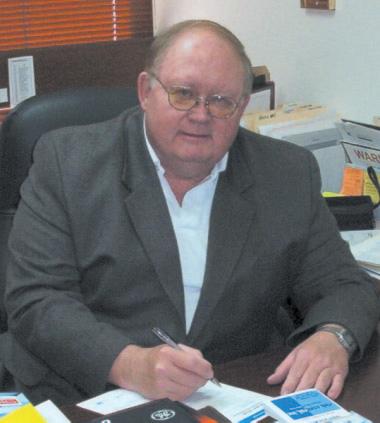 Terrell F. Bird, President RCIUtah, inc. dba Risk Control
Terrell F. Bird, President RCIUtah, inc. dba Risk Control
Utah is a great place to do business because there exists quite a few resources to help the small business owner to succeed. The SBDC portion of the SBA sponsored by Salt Lake Community College has been a great source of help and council. There are also some of the state agencies who offer low cost classes on accounting and bookkeeping. The SBDC has been the best resource to me because of the counseling I have received in dealing with some of the complexities and difficulties which can cause a lot of grief to the small business owner. Since their counselors have “been there before,” they can provide practical suggestions as to the best way to proceed. But the overall attitude in the state is definitely “pro small business.”
Governor’s Office of Economic Development • Annual Report 2007 53
SMALL BUSINESS DEVELOPMENT CENTERS (SBDC)

The first year the business captured gross income of $107,000 which was enough to keep the business going. Each succeeding year brought more growth and increased revenues. A strategic partnership between Brett’s Towing and Lincoln Environmental Services further expanded the success of Gary and James. Because of this alliance they were able to construct a winning bid in 1998 to provide the U.S. Air Force for an emergency response team related to the Intercontinental Ballistic Missile Program at Hill Air Force Base (HAFB). That initial contract was signed in June of 1999 and lasted for five years. The contract was then extended for one year during which another winning bid was written giving James and Gary another five year revenue stream.
The project was not with out its challenges though. For instance, one of the challenges Lincoln Environmental Services had to overcome in order to receive this contract was a revamped accounting system which followed “cost accounting” principles. James and the company CPA understood the basic meaning and intent of this prerequisite yet they were unable to successfully implement this requirement on their own. One of the auditors with the Defense Finance Accounting Service (DFAS) suggested using the Small Business Administration for guidance regarding “cost accounting”. This suggestion proved to be just what they needed.
Terr y said “Beverly King, who works at the Small Business Development Center at Weber State University, was the counselor assigned to solve Lincoln’s “cost accounting” problem. To say that her contribution was staggering is understating what she contributed to the company. Beverly’s prior experience as an accountant with another large government contractor lent itself to our situation perfectly. She understood where the government wanted to go with the “cost accounting” requirement. She, in conjunction w ith the CPA’s office, altered our accounting system to provide all the information required in a timely and efficient manner. In addition, Beverly has continually provided excellent counsel regarding recurring questions Lincoln Environmental has received from DFAS.”
Terr y also said “Beverly King’s contributions are a large part of our business success as a federal contractor. Her efforts and guidance are a direct reflection of our success in re-bidding the current contract with the Air Force.” Revenues from the HAFB contract alone are currently over $500,000 annually. James and Gary know that without the help of their local SBDC their success would have been slower and more difficult.
Progr am Metrics:
Key measures used to monitor performance and impacts are: clients counseled, training classes offered, people trained.
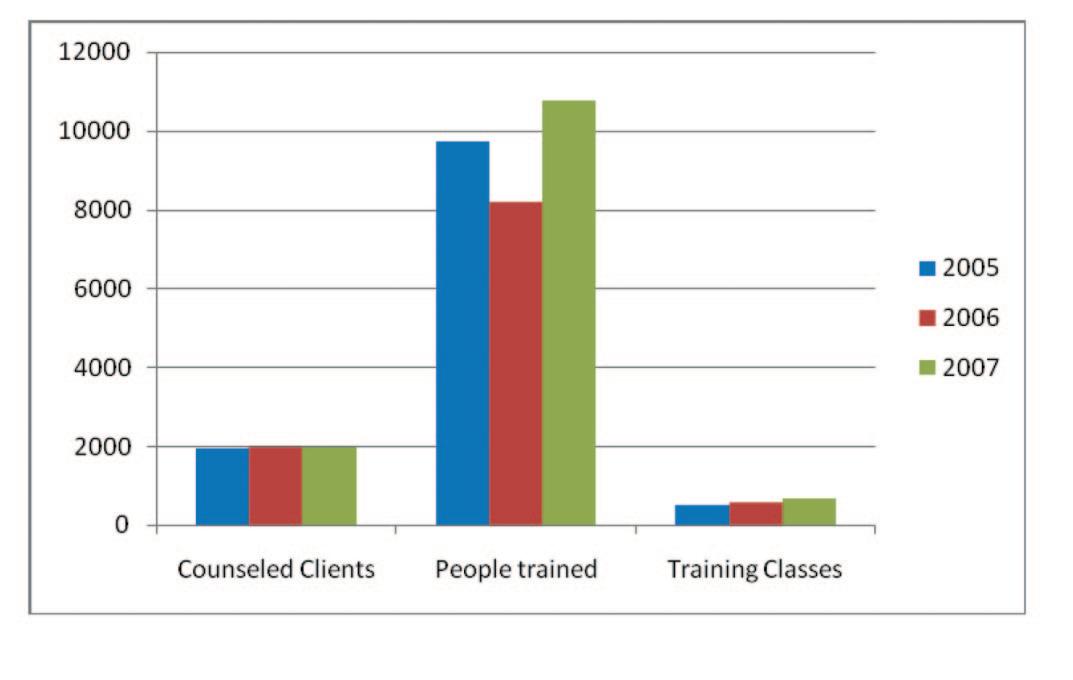
Note the number of training sessions was normalized for 2007 to reflect normalized number of training sessions, there was a change in the way we report classes between 2006 and 2007.
Governor’s Office of Economic Development • Annual Report 2007 54
James “Terry” Grover, Lincoln Environmental Services.
MANUFACTURING EXTENSION PARTNERSHIP (MEP)
The mission of the Manufacturing Extension Partnership (MEP) of Utah is to raise the competitiveness, performance and profitability of Utah’s manufacturers and related industries. MEP was created by federal legislation to enhance productivity and technological performance in manufacturing. Particular focus is given to small and medium-size entities which comprise 98% of all U.S. manufacturers. Under the direction of the National Institute of Standards and Technology, non-profit centers have been created throughout the U.S. Utah has been active for more than a decade working one-on-one w ith Utah manufacturers, government, education and other organizations. MEP secures 100% match for every dollar of support by the state for manufacturing extension services.

AMPAC Filter Table
Operator inspects material on a filter table at its manufacturing facility in Cedar City. New, automated controls have added to the safety and efficiency of their processes. American Pacific is a specialty chemical company that produces (i) energetic products used primarily in space flight and defense systems, automotive airbag safety systems and explosives, (ii) Halotron, a clean fire extinguishing agent and (iii) water treatment equipment.
Recently, Utah State University completed an economic impact study of 72 MEP projects. The study evaluated projects impacts, demonstrating that MEP services in 2006 created or retained 2,543 jobs; generated more than $399 million of additional industrial output; more than $87 million of additional employee compensation; and raised more than $10.5 million of additional indirect business taxes. The above was accomplished with an investment in MEP by the state legislature of less than $1 million, less than 9% of agriculture extension budget. With MEP’s current limited budget, 95% of Utah’s manufacturers do not have access to MEP services. MEP could do much more with additional resources. To that end, the 2007 legislature funded a one-time pilot to initiate a network of manufacturing extension agents, w ith the long range goal of creating regional or county agents throughout Utah. They would provide additional expertise in much the same way as has been proven effective by cooperative extension agents in the “Ag industry”.

The total industry wage for manufacturing is the largest of all major industry sectors in the state- over $5.1 billion, a 10% increase over 2005, and a 15% increase over 2004. Manufacturing’s above-average wages are 45% higher than the other 3 major sectors that also employ more than 100,000 Utahns. Utah’s average monthly manufacturing wage ($3,974 Q4 ’06) has increased 5.5% over 2005, 9.5% over 2004 and 13.9% over 2003 figures. Utah’s manufacturing sector continues to grow despite significant challenges and declines elsewhere in the U.S. Jobs in Utah manufacturing are now over 125,000 compared to a 5-year low of 112,000 in 2003 (11.6% increase).
MEP is a contract partner with the Governor’s Office of Economic Development.. GOED disburses state funding to the MEP program. Regular reporting by MEP, monthly or more often, is made to GOED
Governor’s Office of Economic Development • Annual Report 2007 55
MANUFACTURING EXTENSION PARTNERSHIP (MEP)
executive director, Jason Perry on the activities of MEP within the state, as well as facts pertaining to the manufacturing sector in Utah as it relates to national trends, to other business sectors in the state, and to its impact on local, regional and statewide economies. Because of its singular focus on manufacturing in the state, MEP is called upon to advise GOED and other organizations concerning manufacturing statistics, trends and case studies. MEP has organized visits to Utah manufacturers by federal and state leaders, and by company officials interested in relocating or establishing a facility in Utah. MEP has acted as a spokesman or expert on manufacturing in Utah on numerous occasions, acting as an “extension” of GOED’s staff.
Paiute Trailer

Welder builds custom frame on utility trailer. Paiute Trailers located in central Utah, is known for their quality workmanship and creative designs, Paiute received a Manufacturer of Year award for Rural Development. Paiute anchors the city owned business park in Salina.
A recent 20,000 sq. ft. additional has increased capacity by 200%. According to owner Kevin Neal, sales increased by 20% last year, and they are on course for another record this year, due in part to lean manufacturing practices adopted with the aid of MEP.
GOED’s emphasis on the manufacturing sector’s growth within Utah is consistent with GOED’s mission to provide the economic climate for companies to create high-paying jobs. MEP’s projects with individual companies help them be viable and sustainable. In EDCUtah’s annual report, 189 total projects were pending at fiscal year end, including 73 “hot or warm” projects, of which 42% were manufacturing. This is twice as many as reported for Business Services; 3 times more than Distribution/Warehouse; 4 times that of Info Tech/Electronics and 10 times as much as Med Tech/Health. EDCUtah provided assistance with 34 corporate relocations, expansions and retentions, 56% of which were manufacturers.
GOED utilizes MEP to promote the economic strength of manufacturing by sponsoring venues to expose Utah manufacturers to economic opportunities such as the national Defense Manufacturers Conference, the state PTAC Symposium, rural summits across the state, technology conferences such as the Edison Showcase, Stoel Rives Innovation Awards, USU Operational Excellence, nanoUtah Conference, Centers of Excellence showcase, the national State Science Technology and Institute (SSTI) conference, and others. MEP created its “Manufacturer of the Year” program to recognize Utah companies that have adopted manufacturing best practices and have contributed to the state’s economic growth. Award winners range from small, rural companies to companies with national name recognition. Recognition of these companies by MEP, GOED and presentation of awards by Lt. Governor Herbert helped companies promote themselves, and has acted as a catalyst for other Utah manufacturers to improve and seek similar recognition.
Governor’s Office of Economic Development • Annual Report 2007 56
UTAH DEFENSE ALLIANCE
The Utah Defense Alliance is proud to be able to partner with GOED in support of the Defense and Homeland Security Cluster and on two contracts.
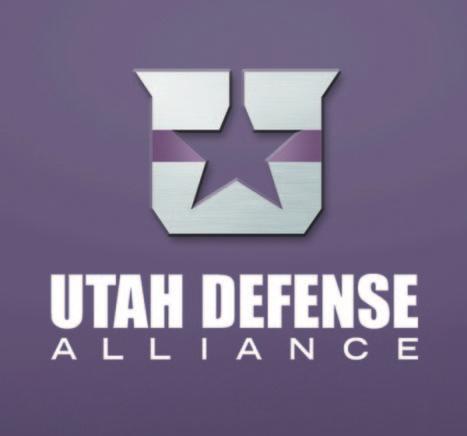
The Utah Defense Alliance (UDA) began in the early 1990’s as a group of volunteer citizens and businesses who came together to ensure the long-term v iability of Hill Air Force Base, especially during the military’s Base Closure And Realignment (BRAC) processes. Their hard work, vision and planning resulted in Hill Air Force Base, not only remaining open, but thriving, while other communities across the nation dealt with the impacts of military installations closing or significantly down-sizing.
In early 2006, UDA broadened their efforts to look at all military activities across the entire State, including U.S. Army Dugway Proving Ground, Tooele Army Depot, Deseret Chemical Depot, and all National Guard and Reserve organizations. UDA remains a volunteer board, comprised of board members from local businesses, defense and aerospace industries, concerned citizens, academia, and local, state and federal government, all committed to advocating for the military installations and growing the defense industry in Utah.
Mission
•Strengthen and support all appropriate governmental and private enterprises in their accomplishment of national defense objectives.
•Expand investment and employment opportunities in defense and aerospace related industries
Goals
•Support Utah military missions, workload, and force structure while developing innovative projects for the future.

•Strengthen the defense industry as a prime economic development engine in Utah.
•Expand Utah’s aerospace industry.
•Promote the availability of a highly skilled workforce to support the defense/aerospace industry.
• Engage local, state, and national political, DOD, and business leaders on defense/aerospace issues.
Governor’s Office of Economic Development • Annual Report 2007 57
ATK is a proud supplier of the F-35 JSF Program, the Upper wing skin, strap and nacelle are fabricated at the Clearfield, Utah facility.
UTAH DEFENSE ALLIANCE
Contracts
Procurement Services. The objectives of this one million dollar contract is to improve the awareness and success rate of Utah businesses in competing for federal, state and local government contracts. UDA (and its sub-contractor Logistics Specialty, Inc.) is under contract with GOED’s Procurement and Technical Assistance Center helping Utah businesses prepare bids, be aware of upcoming federal requirements, introducing small contractors with large contractors and seeking out worldwide opportunities.

UDA is a strong advocate for military missions across the State.
UDA Operations. The objectives of this contract are to support UDA ‘s overall mission and goals and provide staff support to the Military Installation Development Authority (MIDA). MIDA, created by the State Legislature in 2007, was created to encourage the proper redevelopment of aging and deteriorating infrastructure on any military installation in the State, particularly at Hill Air Force Base (HAFB) through viable Enhanced Use Leasing (EUL) projects. Specifically, MIDA is working to further solidify HAFB as a world class military installation and making the West Side Development (a 550-acre parcel of land along I-15) a world class business park targeting aerospace, composites and defense industries. The MIDA Board includes seven members appointed by the Governor.
Governor’s Office of Economic Development • Annual Report 2007 58
WORLD TRADE CENTER
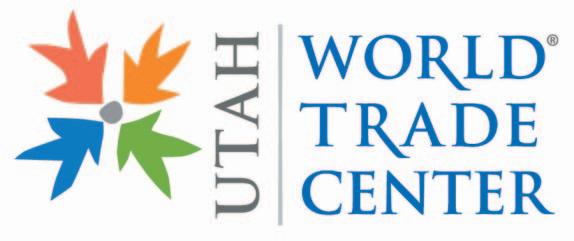
More than just a building or an organization, a World Trade Center (WTC) brings together business, educational and government agencies involved in international trade, provides essential trade services and stimulates the economy of the region it serves. A WTC puts all the services associated with global commerce under one roof. Currently, there are over 300 World Trade Centers in key cities around the world. However, until now, there has been no fully functioning WTC in the intermountain West between Denver and the Pacific coast.
The core purpose of World Trade Center Utah (WTCU), in conjunction with the Governor’s Office of Economic Development International Office, is to help create, promote and support Utah jobs and revenue growth from global trade.
WTCU works every day to motivate, educate, and facilitate international business in Utah, while serving as a “one stop shop” for all issues of global commerce. As a public-private partnership, WTCU works closely with its key partners, including GOED, USTAR, EDCU, the Chambers of Commerce around the state, the U.S. Department of Commerce, the U.S. Small Business Administration, and our many educational institutions in Utah.
The WTCU is bringing together private and public sectors by offering a variety of critical business resources such as:
•Technical assistance
•Training classes and seminars
•Strategy development
•Market analyses
•Trade leads, matchmaking opportunities, sales and sourcing leads
•Introductions to potential clients or partners
•Counseling and mentoring
•Acc ess to other licensed world trade centers around the globe
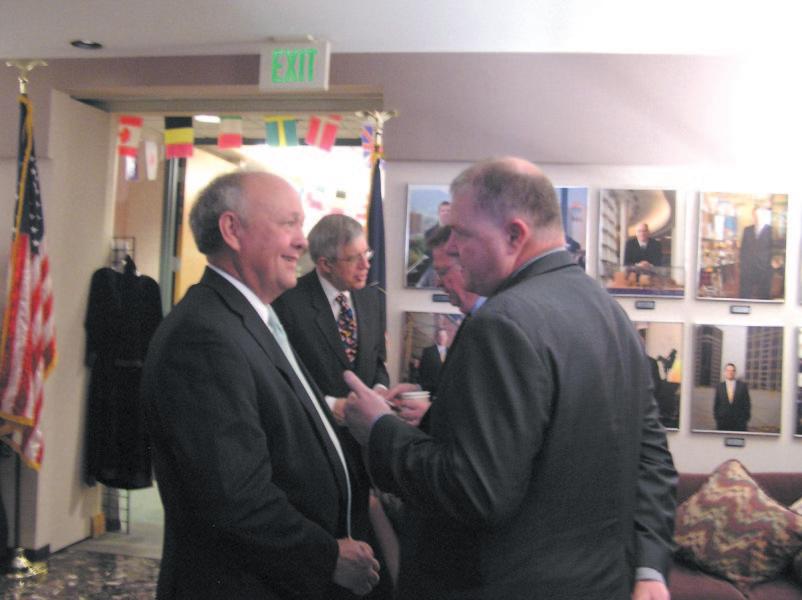
With these trade tools available under one roof, Utah businesses can undertake the most effective globalization of their products and services. With the rapidly expanding competition from abroad, it is imperative that we keep Utah on the international trade map. A Utah WTC is an ideal catalyst for increased - and profitable - international trade. Utah now has the unique cultural, educational, economic and foreign language foundation to make a World Trade Center possible, necessary and successful.
Governor’s Office of Economic Development • Annual Report 2007 59
International Festival hosted by WTCU and Salt Lake Area Chamber of Commerce.
GOED ORGANIZATIONAL CHART
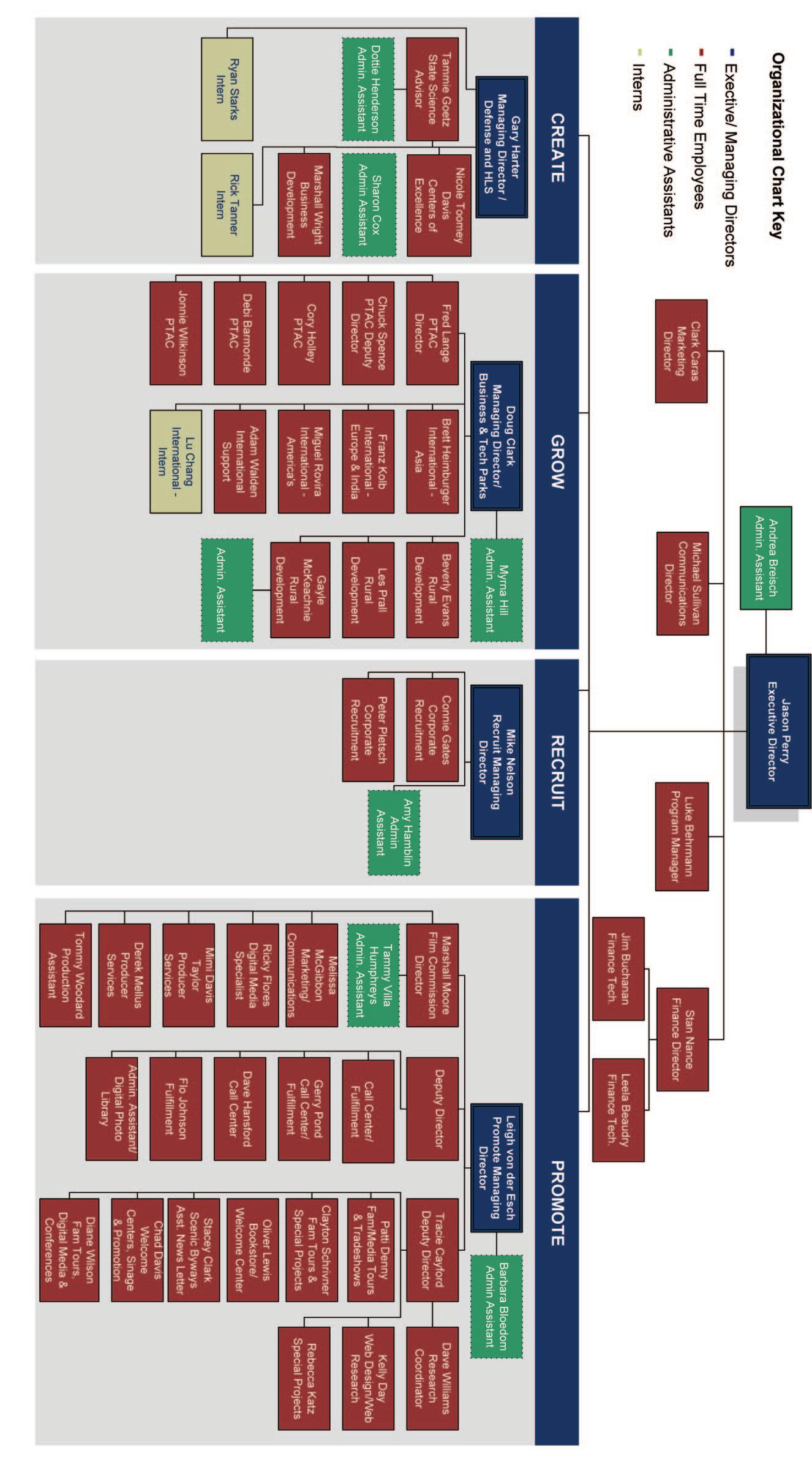
Governor’s Office of Economic Development • Annual Report 2007 60
324 S. State Street, 5th Floor • Salt Lake City, UT 84111 (801) 538-8700 www.goed.utah.gov Governor’s Office of Economic Development



























 —Bob Carter, CEO, Flying Sensors
—Bob Carter, CEO, Flying Sensors







































 Terrell F. Bird, President RCIUtah, inc. dba Risk Control
Terrell F. Bird, President RCIUtah, inc. dba Risk Control










